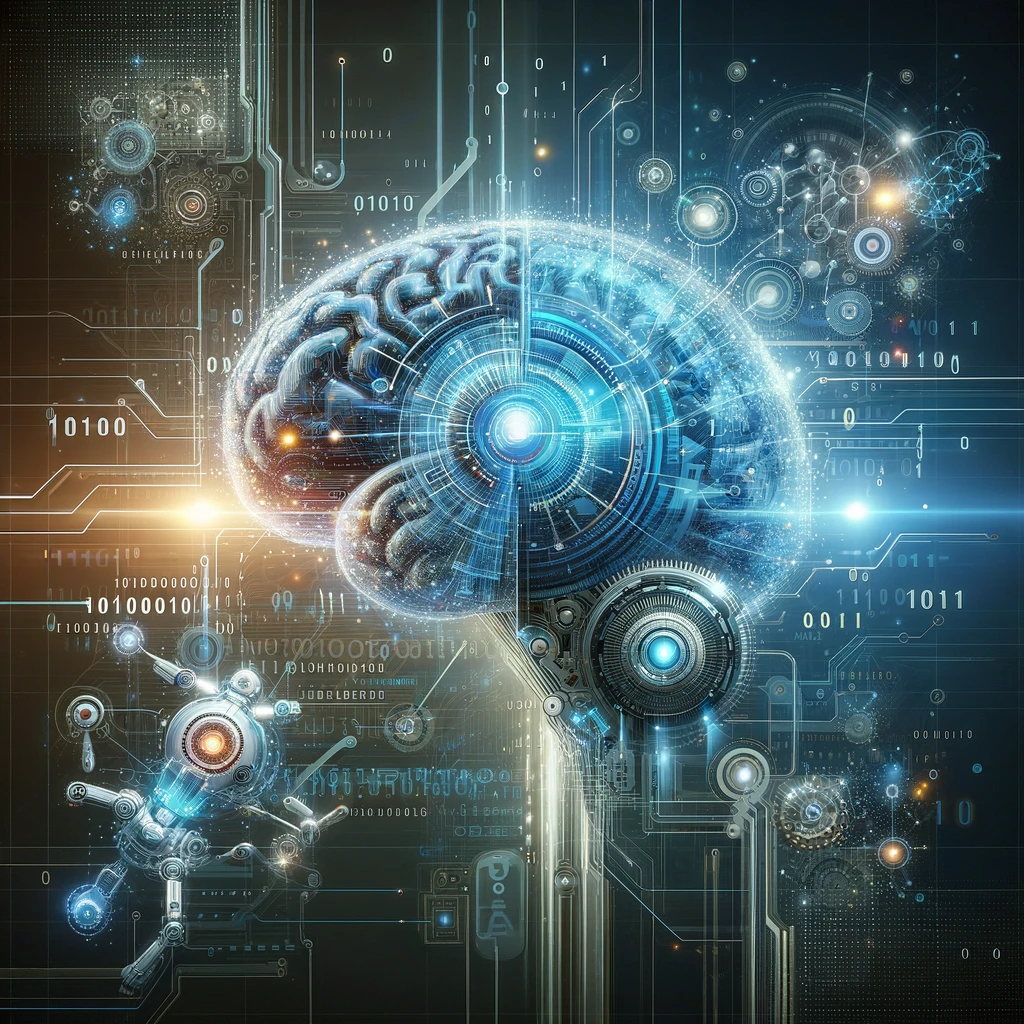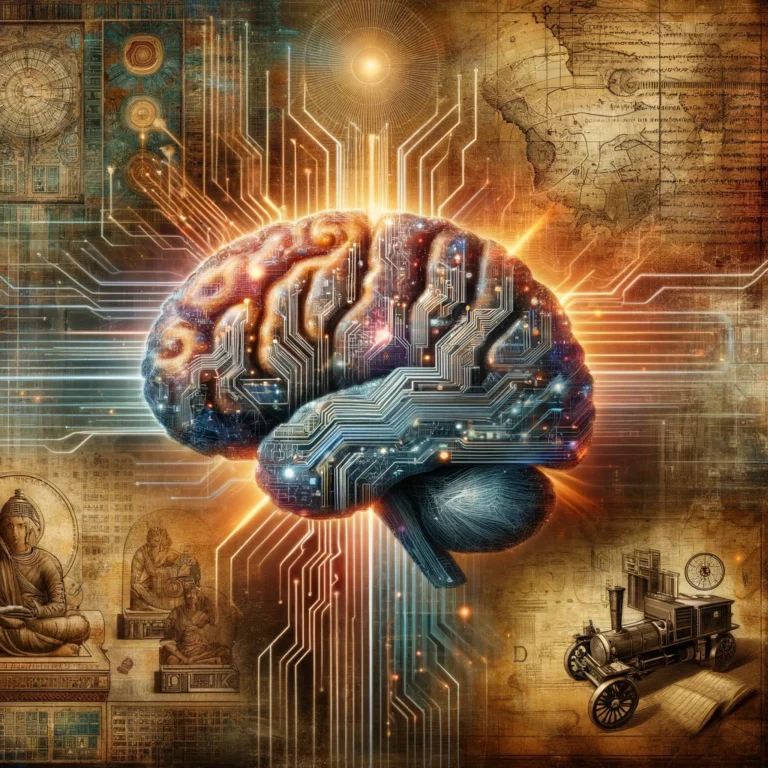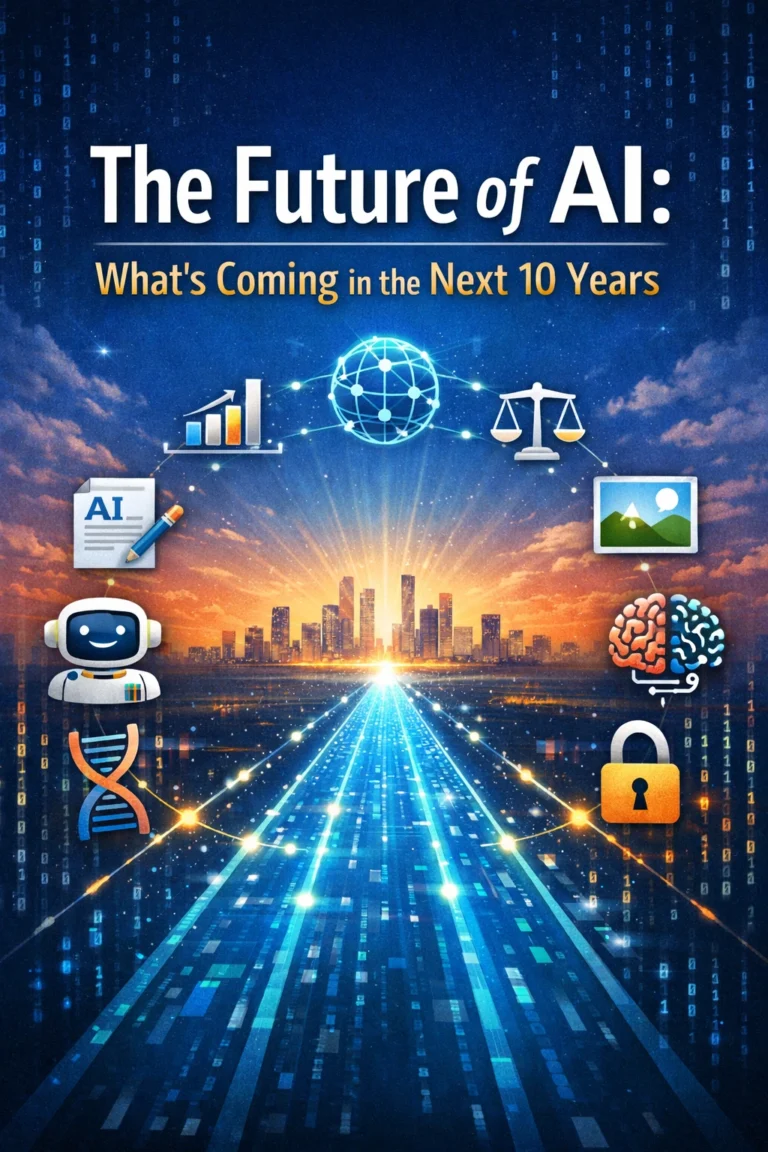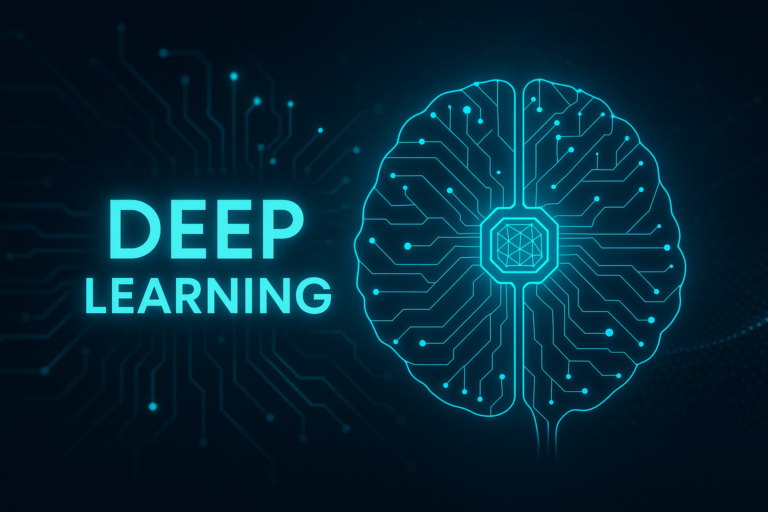Artificial Intelligence: The Future Unfolds

Artificial Intelligence (AI) has witnessed an unprecedented evolution, transforming not just technological landscapes but also the fabric of digital interactions. Machine perception is at the heart of this transformative journey, a pivotal aspect of AI that mirrors human-like understanding and response to sensory inputs. This advancement in machine perception signifies a leap from traditional computing into an era where machines comprehend and interact with their environment in ways that were once the exclusive domain of human intelligence.
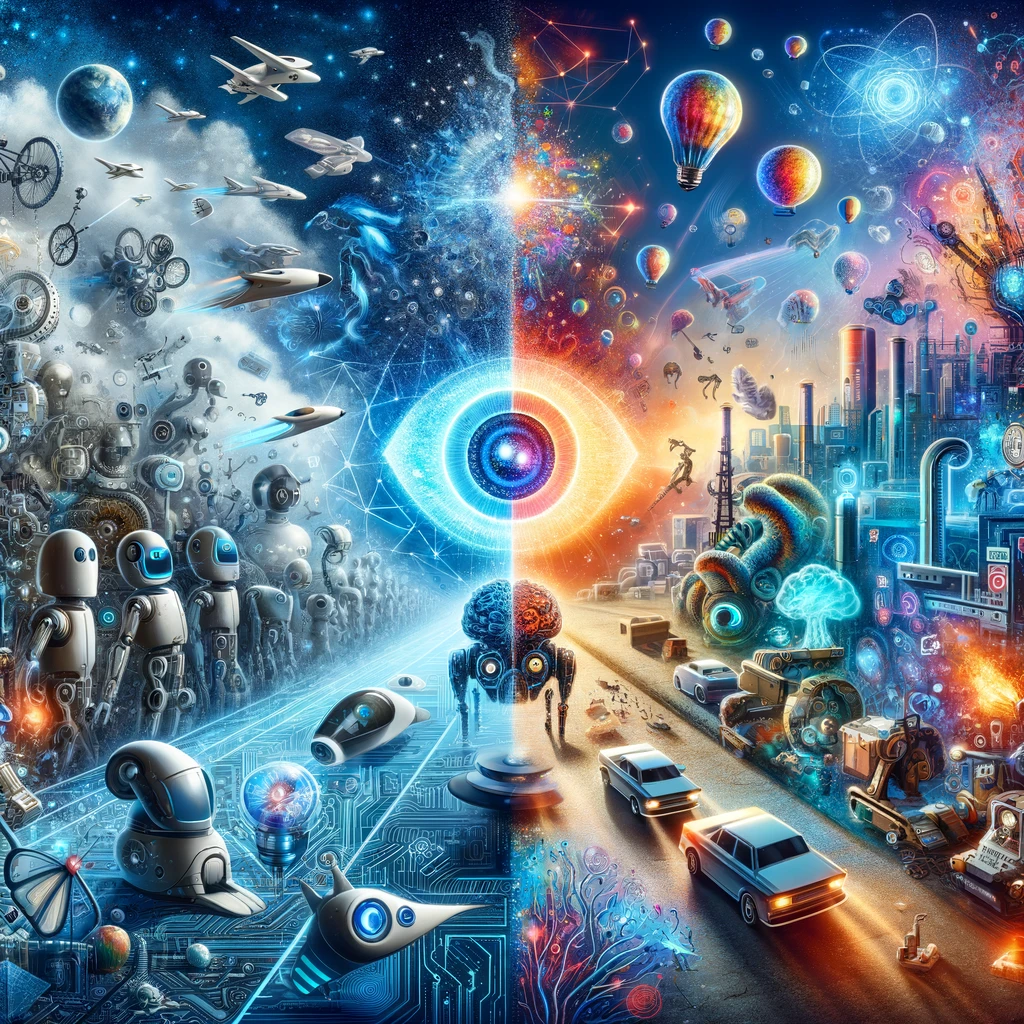
Artificial Intelligence Applications in Machine Perception: Embracing the Next-Gen Innovations
Machine perception encompasses the ability of Artificial Intelligence systems to process and interpret data from the world around them – a feat achieved through auditory, visual, and tactile senses.
This capability marks a paradigm shift in how machines understand and engage with their surroundings, paving the way for innovations that were once thought to be in the realm of science fiction.
From its nascent stages of recognizing patterns and interpreting essential sensory inputs, Artificial Intelligence has now advanced to a stage where it can analyze complex data sets, make decisions, and even predict future outcomes.
This journey through the evolution of AI’s machine perception capabilities lays the groundwork for appreciating the revolutionary changes it has brought about in various sectors, from healthcare and automotive to entertainment and public safety.
As we delve deeper into Artificial Intelligence and machine perception, we explore its various applications, the technological marvels it has enabled, and the challenges and ethical considerations that come with it.
This exploration is not just about understanding a technology; it’s about envisioning a future intricately woven with intelligent systems, redefining human-machine interaction.
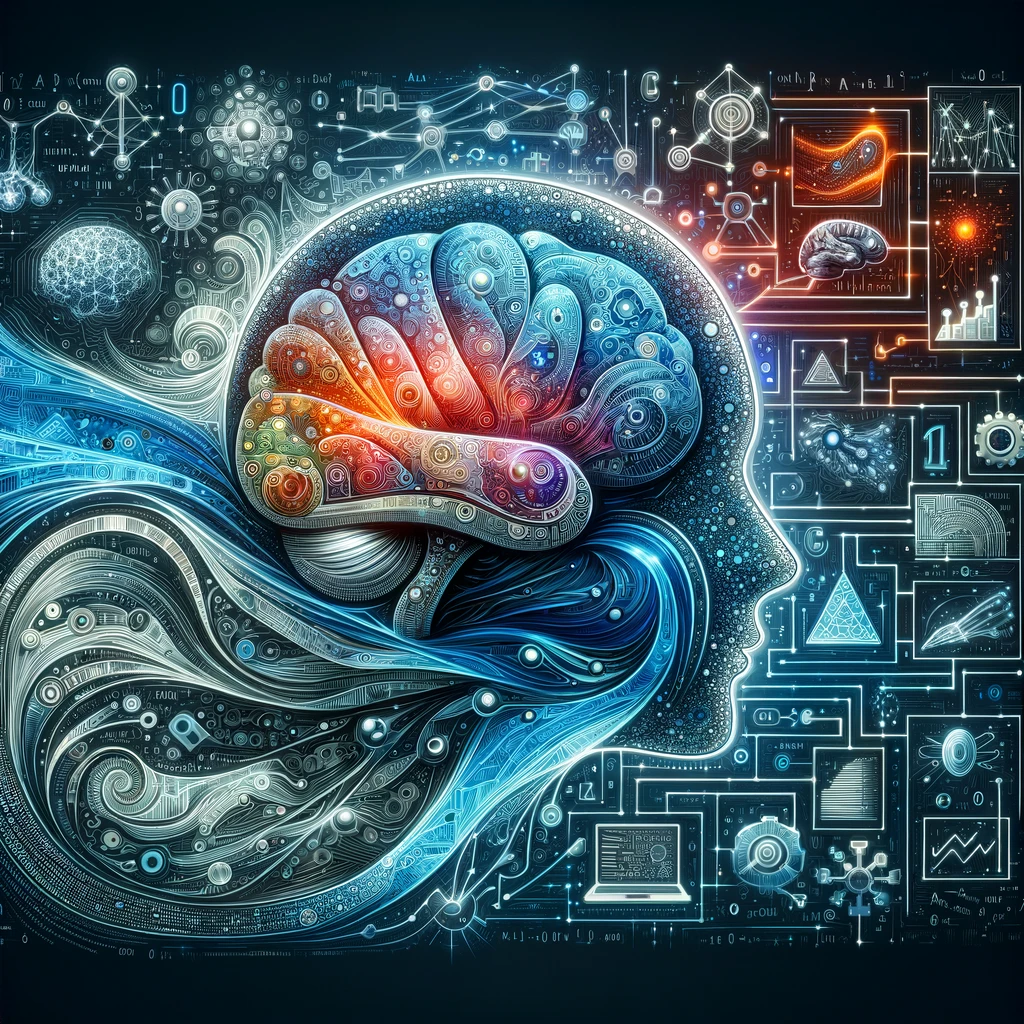
Section I: Advancements in Computer Vision
Evolution from Basic Image Processing to Sophisticated AI-Driven Analysis
The journey of computer vision in AI started with simple image processing techniques – digitizing images and performing basic operations like edge detection and contrast enhancement.
As technology advanced, so did the capabilities of computer vision, transforming it from rudimentary image analysis to a complex, AI-driven process capable of understanding and interpreting visual data with astonishing accuracy.
Integration of Neural Networks and Deep Learning
Integrating neural networks and intense learning marked a turning point in computer vision. Inspired by the human brain’s neural structure, deep learning enabled machines to learn from vast amounts of data, identifying intricate patterns with unprecedented accuracy.
This innovation was further enhanced by convolutional neural networks (CNNs), which analyze visual imagery.
Case Studies in Healthcare and Autonomous Vehicles
The practical implications of these advancements are vast. In healthcare, computer vision has revolutionized diagnostics through AI-driven image analysis, aiding in early disease detection and accurate diagnoses.
Machine perception has become a cornerstone for autonomous vehicles in the automotive industry, enabling them to navigate complex environments safely by processing extensive sensory data.
Future Trends and Potential Applications
Looking ahead, the future of computer vision is replete with possibilities.
The integration of computer vision with other AI domains like natural language processing is set to create more intuitive machine interactions.
Additionally, its application in augmented and virtual reality promises to transform entertainment, education, and professional training.
Challenges and Ethical Considerations
Despite these advancements, the field faces significant challenges. Issues such as privacy, data security, and potential biases in AI systems are critical concerns.
Addressing these challenges responsibly is imperative to ensure that computer vision technologies continue to serve as a force for good.

Section II: The Evolution of Speech Recognition
Development of Speech Recognition Technology
Speech recognition technology has evolved from recognizing simple voice commands to understanding complex natural language.
Early systems could only comprehend a limited vocabulary in controlled environments, but with advancements in AI, modern systems can process diverse languages and dialects in various settings.
Innovations in Natural Language Processing and Contextual Understanding
Integrating Natural Language Processing (NLP) has been pivotal in this evolution.
NLP enables machines to transcribe speech and understand its context and semantics, making interactions more intuitive and human-like.
Contextual understanding, an essential aspect of advanced speech recognition systems, allows for more accurate spoken language interpretations.
Impact on Accessibility, Smart Technology, and Global Communication
The impact of these advancements is profound. Regarding accessibility, speech recognition has opened new avenues for individuals with disabilities, making technology more inclusive.
In innovative technology, voice assistants and home automation systems have become commonplace.
Additionally, speech recognition has been instrumental in breaking down language barriers and facilitating global communication.
Challenges in Achieving Nuanced, Multilingual Recognition
Despite the progress, challenges remain, especially in nuanced, multilingual recognition. Accurately recognizing and interpreting dialects, accents, and idiomatic expressions across different languages is complex.
Most systems are trained on data from dominant languages, leading to performance disparities.
Future Advancements and Societal Implications
Looking forward, the field of speech recognition is poised for further breakthroughs. Anticipated advancements include systems that can detect and respond to emotional cues in speech, enhancing empathetic interactions.
These developments will have significant societal implications, especially in areas like education and healthcare, where personalized communication is key.
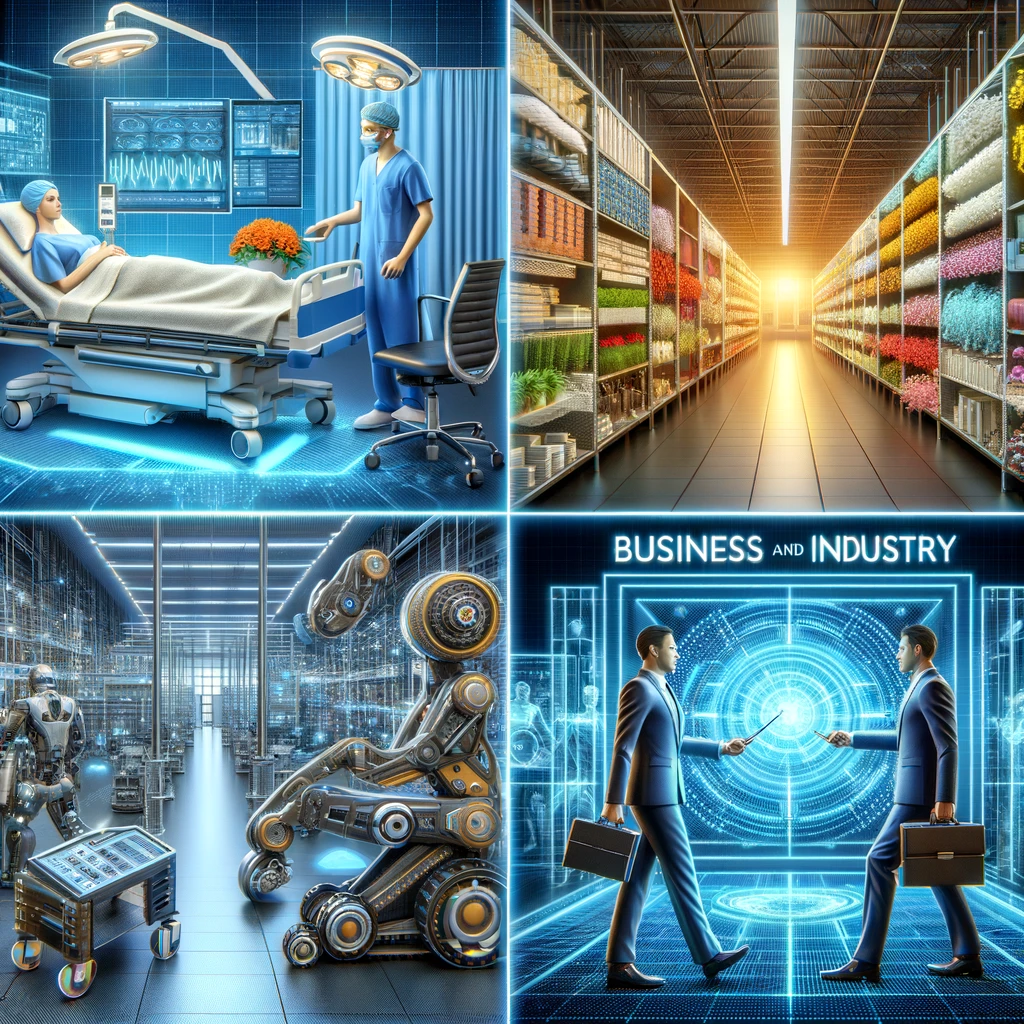
Section III: The Pioneering World of Cognitive AI
Definition and Significance of Cognitive AI
Cognitive AI represents a groundbreaking shift in artificial intelligence, moving beyond traditional data processing to more nuanced, human-like understanding and interaction.
It combines AI’s computational power with emotional and social intelligence, enabling systems to interpret and respond to complex human behaviors.
Integration of Sensory Data and Emotional Intelligence
A key aspect of cognitive AI is its ability to process and integrate sensory data with emotional intelligence.
This means these systems can perceive the environment, recognize emotional cues, and respond contextually appropriately, opening new avenues in customer service, mental health care, and education.
Case Studies in Various Industries
Cognitive AI has found applications across diverse industries. In healthcare, it assists in patient diagnosis by considering medical data and patient emotions.
In retail, it enhances customer experience by predicting consumer behavior. In finance, it aids in fraud detection by analyzing transaction patterns alongside human behavioral cues.
Balancing Technological Capabilities and Ethical AI
As cognitive AI advances, it brings a host of ethical considerations. It is crucial to ensure that these systems are developed and used responsibly.
Concerns include privacy, consent, and the potential for misuse in decision-making processes.
Striking a balance between leveraging capabilities and maintaining ethical standards is essential.
Future Trajectory of Cognitive AI Development
Cognitive AI’s future trajectory is expected to further reshape our interaction with technology.
We can anticipate more sophisticated systems capable of deeper understanding and interaction, addressing complex societal challenges through personalized, empathetic support.
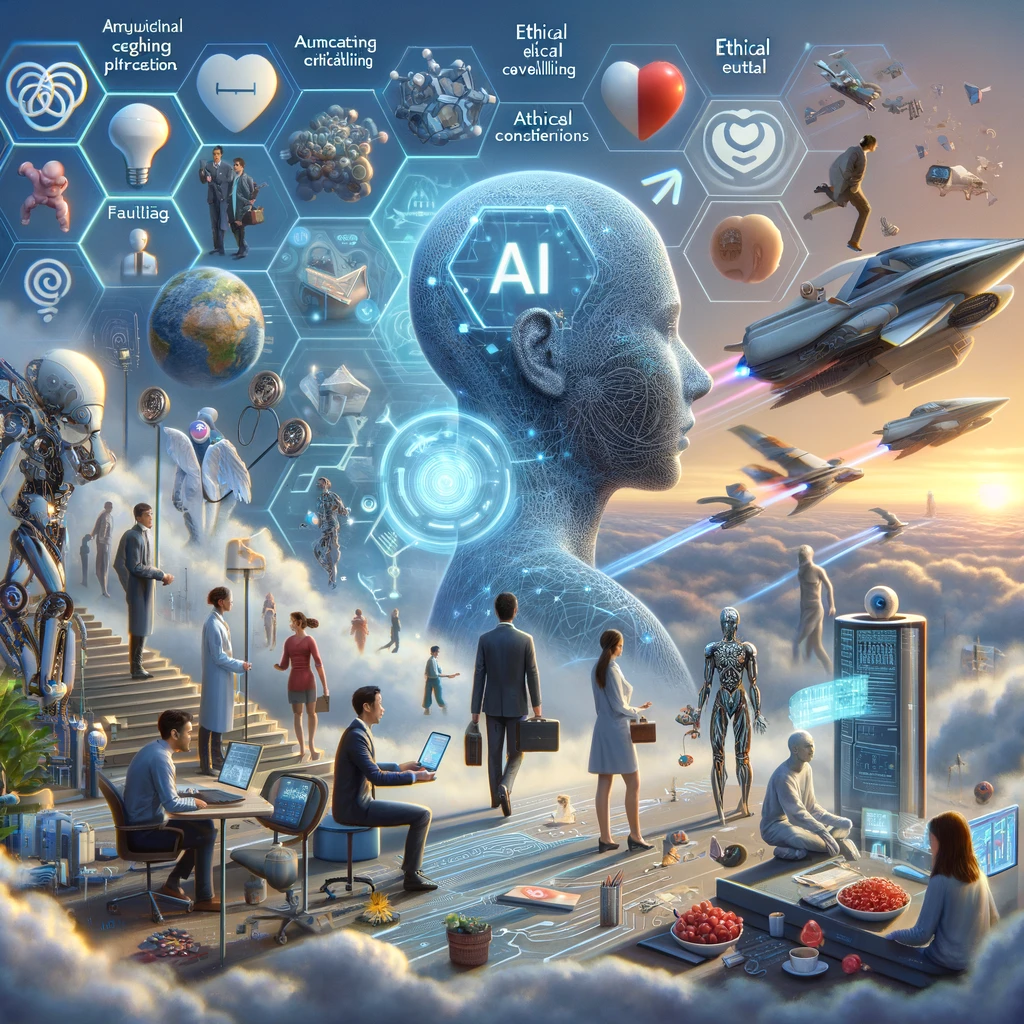
Section IV: Ethical Considerations and Future Implications
Ethical Dilemmas Posed by Advanced Artificial Intelligence
The advancement of AI technologies has introduced a range of ethical dilemmas.
These include privacy concerns, as AI can process vast amounts of personal data, and the potential for AI-driven unemployment.
Additionally, using AI in surveillance and decision-making processes raises questions about ethics and accountability.
Responsible AI Development and Global Policies
Responsible AI development calls for a collaborative approach involving stakeholders from various sectors.
It’s crucial to establish global policies and standards that guide AI development and usage, ensuring transparency in algorithms and preventing biases in AI decision-making.
Collaboration between governments, industry leaders, and academic institutions is critical in formulating these policies.
Role of Public Education in Shaping AI’s Future
Public education is vital in shaping the future of AI.
Educating the public about AI’s capabilities and ethical implications is essential for informed decision-making.
It’s also critical for preparing the workforce for an AI-driven future, emphasizing the need for new skills and adaptability.
Potential Socio-Economic Impacts of AI
AI’s socio-economic impacts are far-reaching. While AI promises increased efficiency and new opportunities, it also poses challenges such as job displacement and economic inequalities.
Addressing these impacts requires proactive policies, education, and investment in social safety nets and job creation.
Preparing Societies for an AI-Driven Future
To prepare for an AI-driven future, societies must focus on education and training programs, create jobs leveraging human creativity and empathy, establish ethical guidelines and regulations, and foster a culture of innovation and adaptability.
Conclusion: Reflecting on the Journey and Envisioning the Future of Artificial Intelligence
Summary of Key Points
- The journey of AI, especially in machine perception, represents a remarkable blend of technological innovation and human-like interaction.
- Advancements in computer vision, speech recognition, and cognitive AI highlight the diverse applications and profound impact of AI.
Balance of Innovation and Ethical Responsibility
- The development of AI is not only a story of technological breakthroughs but also one of navigating ethical landscapes. Balancing innovation with ethical responsibility ensures that AI advancements benefit society while respecting individual rights and norms.
Potential of AI to Transform Life
- AI has the potential to transform various aspects of life, from enhancing healthcare and education to revolutionizing industries and everyday experiences.
Visionary Perspective on AI’s Future
- The future of AI is envisioned as a collaborative space where AI augments human abilities and works alongside humans in creative and empathetic ways.
Embracing AI Advancements with Informed Optimism
- Embracing AI advancements with informed optimism involves recognizing both the opportunities and challenges. Educating ourselves about AI and preparing for its impacts are essential in leveraging AI for the greater good.

A. Artificial Neural Networks (ANNs)
Introduction
Artificial Neural Networks (ANNs) are at the forefront of the current AI revolution.
They model the human brain’s neural structure to interpret complex data patterns.
They enable machines to perform various tasks, from simple pattern recognition to complex decision-making.
Understanding the Structure of ANNs
- Input Layer: This is where the ANN receives its initial data. This layer is designed to preprocess the data into a format suitable for the neural network. For example, in image recognition tasks, the input layer processes pixels of images as its input.
- Hidden Layers: These layers are the core of an ANN, consisting of a set of neurons that apply transformations to the inputs. Each neuron in these layers represents a mathematical function, and the collective output is passed to the next layer. The complexity and depth of these layers determine the network’s capability to learn intricate patterns.
- Output Layer: The final layer of an ANN provides the output for the neural network. For instance, in a classification task, the output layer will indicate the class to which the input data belongs.
Learning Process in ANNs
- Weight Adjustment: The ‘learning’ in ANNs occurs through the adjustment of weights – a process of fine-tuning the connections between neurons. This is achieved through algorithms like backpropagation, where the network adjusts its weights based on the error of its output.
- Overfitting and Underfitting are two common challenges in training ANNs. Overfitting occurs when a network learns the training data too well, including the noise, making it perform poorly on new data. Underfitting happens when the network needs to understand the data better. Regularization methods like dropout can help prevent overfitting by randomly deactivating neurons during training.
- Dropout and Regularization: Dropout is a technique that involves randomly turning off neurons during training, which helps prevent the network from becoming too dependent on any one path. On the other hand, regularization adds a penalty to the loss function (such as L1 or L2 regularization), making the model more straightforward and less prone to overfitting.
- Batch Normalization: This technique normalizes the input layer by adjusting and scaling activations. It’s used to stabilize and accelerate the learning process in ANNs.
Applications and Examples
ANNs have found applications in a variety of fields:
- Image and Speech Recognition: ANNs, especially CNNs, have been instrumental in advancing image recognition technologies. They have been used in facial recognition systems and medical imaging analysis. In speech recognition, RNNs and LSTMs help understand and transcribe human speech with high accuracy.
- Predictive Analytics: ANNs are used in the finance sector to predict stock market trends and detect fraud. They analyze historical data to predict future trends.
- Natural Language Processing (NLP): ANNs are used to translate languages, generate text, and understand human language in tools like chatbots and virtual assistants.
Challenges and Future Directions
- Computational Complexity: As ANNs become more complex, the computational power required to train them increases.
- Explainability and Transparency: The ‘black box’ nature of ANNs makes it challenging to understand how they arrive at specific decisions or predictions. Efforts are being made to improve the interpretability of these networks.
- Ethical Concerns and Bias: The outputs of an ANN depend heavily on the data it is trained on. Biased or incomplete training data can lead to flawed or biased decision-making.
In conclusion, ANNs represent a significant leap in AI capabilities.
They mimic the intricate processes of the human brain to solve complex problems.
As technology advances, we will likely see more sophisticated neural networks capable of even more complicated tasks, albeit with an increased focus on ethical implications, transparency, and computational efficiency.
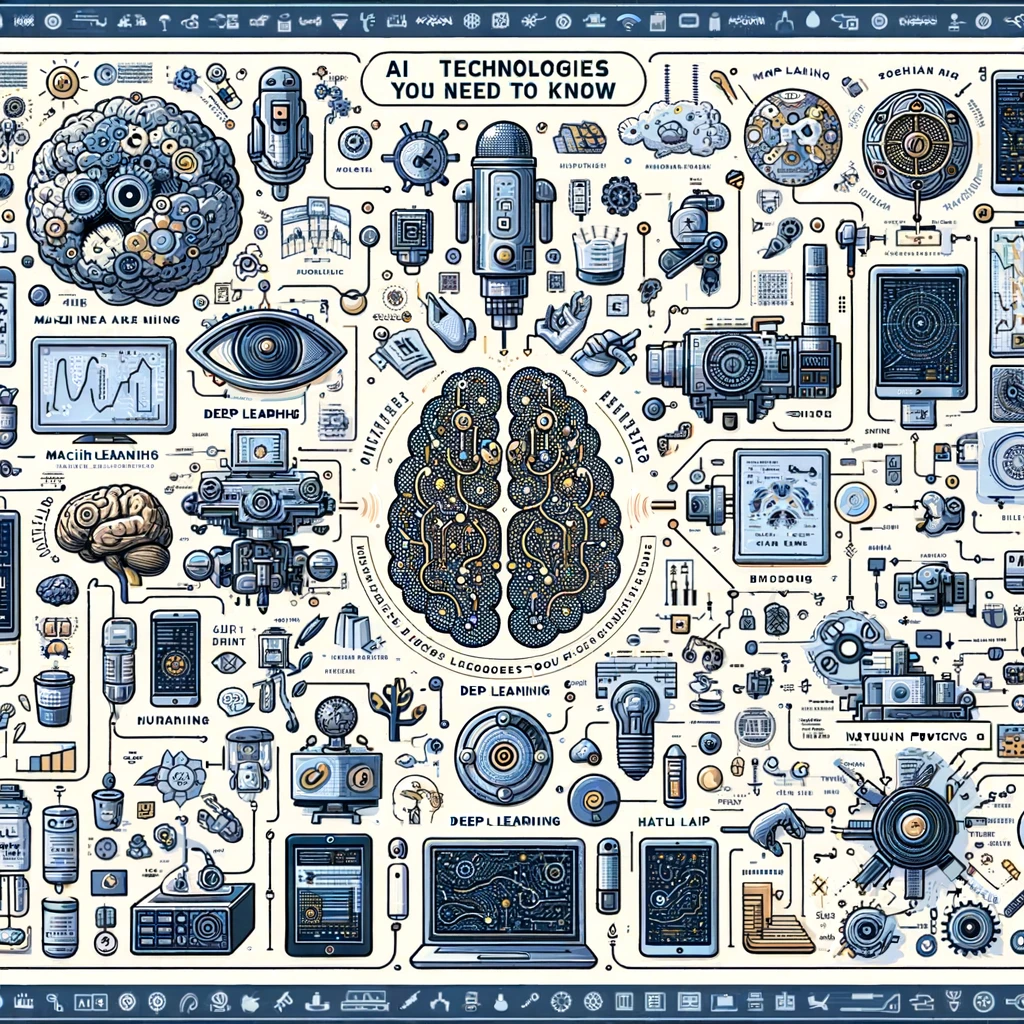
B. Knowledge Representation and Engineering
Introduction
Knowledge Representation and Engineering (KRE) forms the cognitive backbone of Artificial Intelligence (AI), enabling machines to process, analyze, and interpret vast quantities of data.
It’s the art of transforming real-world information into a form a computer system can utilize to solve complex tasks.
Fundamentals of Knowledge Representation
- Importance in AI: KRE is critical in AI as it defines how information is structured and interpreted. It’s akin to creating a map of knowledge that AI systems can navigate.
- Types of Knowledge Representation:
- Declarative Knowledge: Represents facts about the world, akin to static information in a database. For example, declaring that ‘Paris is the capital of France.’
- Procedural Knowledge: Involves ‘how-to’ information or algorithms. For instance, procedural knowledge would be the steps to solve a mathematical equation.
Techniques and Tools in KRE
- Semantic Networks: Graph structures used for representing knowledge in interconnected nodes and arcs, useful for visualizing relationships and hierarchies.
- Frames and Scripts: Structures for representing stereotypical situations, where a frame is a data structure for subdividing knowledge and scripts describe sequences of events.
- Rule-Based Systems: Systems using rules as a knowledge representation technique, applying them to known facts to infer new facts. They are often used in expert systems.
Logic-Based Representation
- Propositional and Predicate Logic: These forms of logic are foundational in KRE, providing a structured way of declaring and inferring facts.
- Inference Mechanisms: Methods for deriving new knowledge from existing information. They are crucial in AI for decision-making, exemplified in systems like medical diagnosis tools.
Knowledge Engineering
- Process of Building Knowledge-Based Systems: Involves knowledge acquisition (gathering relevant expertise) and validation (ensuring the knowledge is accurate and reliable).
- Building Ontologies: The process of creating ontologies involves defining a set of concepts and their interrelationships within a specific domain, like in creating a medical ontology for healthcare applications.
Applications and Examples
- Semantic Networks in AI: Used in natural language processing for understanding and generating human language.
- Expert Systems: Employ rule-based systems to emulate the decision-making ability of human experts in fields like medicine and finance.
- Ontologies in Data Integration: Crucial in integrating data from diverse domains, for instance, integrating various healthcare data sources for comprehensive patient care.
Challenges and Future Outlook
- Scalability and Complexity: As the amount of available data grows, creating and maintaining extensive knowledge bases becomes increasingly challenging.
- • Dynamism and Real-Time Processing: KRE systems need to adapt to real-time changes, requiring dynamic update mechanisms.
In conclusion, Knowledge Representation and Engineering are vital to AI, enabling systems to make informed decisions based on structured information.
As AI continues to evolve, the complexity and sophistication of KRE systems are expected to grow, paving the way for more advanced and intuitive AI applications.

C. Deep Learning
Introduction
Deep Learning, a subset of machine learning, is a transformative technology in artificial intelligence (AI).
It involves training artificial neural networks on large datasets to perform tasks like image and speech recognition, natural language processing, and more.
This approach has led to significant breakthroughs across various AI applications.
Evolution from Machine Learning to Deep Learning
- Traditional Machine Learning: Initially, machine learning models relied heavily on hand-engineered features and linear models. These models were effective for certain tasks but limited in handling complex data.
- Advent of Deep Learning: With the advent of deep learning, the need for manual feature extraction diminished. Deep learning models, particularly neural networks with many layers, automatically learn features from raw data, making them more effective for complex tasks.
Deep Learning Architectures
- Residual Networks (ResNets): ResNets introduced the concept of skip connections, allowing gradients to flow through the network more effectively and enabling the training of much deeper networks.
- Generative Adversarial Networks (GANs): Consisting of two networks, a generator and a discriminator, GANs are used for generating new data that’s similar to the training data. They have applications in image generation, style transfer, and more.
Applications and Impact
- Image and Video Analysis: Deep learning, especially CNNs, has revolutionized image recognition and processing, leading to applications in facial recognition, medical imaging, and autonomous vehicles.
- Speech and Audio Processing: Deep learning models have significantly improved the accuracy of speech recognition systems, enabling more natural interactions with AI assistants.
- Natural Language Processing: With models like transformers, deep learning has enhanced the ability of machines to understand, interpret, and generate human language.
Challenges in Deep Learning
- Vanishing/Exploding Gradients: In intense networks, gradients can become too small or too large, hindering learning. Techniques like batch normalization and improved initialization methods have helped mitigate these issues.
- Interpretability: Deep learning models, especially those with many layers, can be seen as “black boxes” due to their complex nature. It is challenging to understand how they make specific decisions.
- Data and Computational Requirements: Training deep learning models requires large amounts of data and significant computational resources, which can be a barrier to entry for some organizations.
Ethical Considerations and Future Trends
- Bias in AI: Deep learning models can perpetuate and amplify biases in their training data, leading to fairness and ethical concerns.
- Future of Deep Learning: The future trends in deep learning include the development of more efficient models that require less data, advances in unsupervised and semi-supervised learning, and efforts to make models more interpretable and fair.
In summary, deep learning has been a game-changer in AI, driving significant advancements across various domains.
However, it also poses unique challenges and ethical concerns that need to be addressed as the technology continues to evolve.

D. Machine Learning Categories
Introduction
Machine Learning (ML), a pivotal technology in AI, is broadly categorized based on the learning approach and the data type available.
These categories, supervised, unsupervised, and reinforcement learning, have unique methodologies and applications.
Supervised Learning
- Definition and Process: Supervised learning involves training models on labeled data, where the input and the desired output are provided. The model learns to map inputs to outputs, making it suitable for classification and regression tasks.
- Algorithms and Applications: Popular algorithms include Linear Regression for continuous output prediction and Logistic Regression for binary classification. Supervised learning is widely used in applications like spam detection in emails, credit scoring in finance, and medical diagnosis.
Unsupervised Learning
- Characteristics: The algorithm is trained on data labels in un without predefisupervised learning. The goal is to uncover hidden patterns within the data.
- Techniques and Use Cases: Common techniques include clustering, where data is grouped based on similarities, and principal component analysis (PCA) for dimensionality reduction. Unsupervised learning finds applications in market segmentation, anomaly detection in network security, and organizing large data sets like customer databases.
Reinforcement Learning
- Basics and Key Concepts: Reinforcement learning involves an agent that learns to make decisions by interacting with its environment. It is guided by a reward system, learning to take actions that maximize the cumulative reward.
- Algorithms and Real-world Implementation: Algorithms like Q-learning and Policy Gradients enable agents to learn optimal policies. Reinforcement learning is pivotal in areas like robotics for autonomous navigation and in gaming, where AI agents learn to play and win complex games.
Ensemble Methods
- Combining Models for Enhanced Performance: Ensemble methods, such as Random Forests, Bagging, and Boosting, combine the predictions from multiple models to improve the overall performance. They are effective in reducing variance (bagging), bias (boosting), and improving predictions (stacking).
- Applications: These methods find widespread use in various predictive modeling tasks, like risk assessment in insurance and predicting consumer behavior in retail.
Advanced Algorithms
- Deep Reinforcement Learning: This integrates deep learning with reinforcement learning, allowing agents to make decisions from unstructured input data. It has led to breakthroughs like AI systems defeating human players in complex games like Go and Poker.
- Unsupervised Learning Techniques: Advanced techniques like hierarchical clustering and generative models enable deeper insights into data, finding applications in fields like bioinformatics for gene clustering and in social network analysis.
Challenges and Future Directions
- Data Quality and Quantity: The effectiveness of machine learning models heavily relies on the quality and volume of data available.
- Model Generalization: Ensuring models generalize well to new, unseen data while avoiding overfitting.
- Ethical Considerations: Addressing potential biases in machine learning models and ensuring their decisions are fair and ethical.
Machine learning is a cornerstone of AI in its various forms, powering multiple applications across industries.
As the field evolves, emerging trends include integrating different learning types, advancements in semi-supervised and self-supervised learning, and developing models that can learn with less data.

E. Classification and Regression
Introduction
Two of machine learning’s most fundamental tasks are classification and regression.
These tasks enable machines to make predictions or decisions based on input data, playing a crucial role in various applications across multiple domains.
Classification: Deciphering Categories
- Defining Classification: Classification involves categorizing data into predefined classes or groups. It’s used when the output of the model is a discrete label or category.
- Key Algorithms: Common algorithms include Decision Trees, Naive Bayes, and Support Vector Machines (SVMs). Decision Trees classify data by splitting it based on feature values, Naive Bayes uses probability techniques, and SVMs find a hyperplane that best separates different classes.
- Real-World Applications: Examples include email spam detection (spam or not spam), medical diagnosis (identifying diseases based on symptoms), and sentiment analysis (categorizing opinions in text as positive, negative, or neutral).
Regression: Predicting Continuous Outcomes
- Understanding Regression: Regression deals with predicting a continuous quantity. Unlike classification, the output of regression is a continuous value, such as a temperature, price, or probability.
- Popular Techniques: Linear Regression is the most basic form, where a linear relationship between input and output is assumed. More complex forms include Polynomial Regression and Ridge/Lasso Regression, which are used to fit non-linear data and prevent overfitting, respectively.
- Applications in Various Sectors: Regression models are used for predicting house prices based on features like location and size, stock market forecasting, and estimating life expectancies.
Advanced Techniques
- Support Vector Machines (SVMs) for Regression and Classification: SVMs are versatile and can be used for both regression (SVR) and classification (SVC). They are effective in high-dimensional spaces and in cases where the number of dimensions exceeds the number of samples.
- Ensemble Methods in Regression: Techniques like Gradient Boosting and Random Forests are used to improve prediction accuracy. They combine multiple weak models to form a strong predictor, effectively handling various types of regression problems.
Evaluation Metrics
- For Classification: Metrics like the Confusion Matrix, which provides a detailed breakdown of correct and incorrect classifications, and ROC-AUC, which measures the model’s ability to distinguish between classes, are crucial for evaluating classification models.
- For Regression: The Mean Squared Error (MSE) measures the average squared difference between the predicted and actual values, while the R² Score quantifies how well future samples are likely to be predicted.
Challenges and Future Directions
- Data Quality and Quantity: The performance of classification and regression models heavily relies on the quality and amount of training data.
- Model Selection and Tuning: Choosing the right model and tuning its parameters are essential for optimal performance.
- Addressing Bias and Fairness: Ensuring that models do not perpetuate or amplify biases present in the training data.
Classification and regression are foundational techniques in machine learning, facilitating a wide range of practical applications.
The continuous advancements in these areas, including the development of more robust and fair models, signify their ongoing importance in the Artificial Intelligence landscape.

F. Computational Learning Theory
Introduction
Computational Learning Theory is a subfield of artificial intelligence that focuses on designing and analyzing algorithms to make data predictions.
This theory provides a framework for understanding the capabilities and limitations of learning algorithms, crucial for developing efficient artificial intelligence systems.
Complexity Classes in Learning
- Understanding Complexity Classes: These classes, such as P, NP, NP-Complete, and NP-Hard, are fundamental in computational theory. They categorize problems based on their computational complexity and solvability.
- P (Polynomial Time): Problems that can be solved quickly (in polynomial time) by a deterministic machine. For instance, sorting numbers is a P problem.
- NP (Nondeterministic Polynomial Time): Problems for which a solution can be verified quickly, even if finding the solution is slow. An example is the Sudoku puzzle.
- NP-Complete: The hardest problems in NP. If any NP-Complete problem can be solved quickly, all NP problems can be.
- NP-Hard: Problems as hard as the hardest problems in NP, not necessarily in NP themselves. They are often optimization problems.
Sample Complexity: The Data Requirement
- Defining Sample Complexity: Refers to the amount of data needed for a learning algorithm to achieve a certain level of performance.
- Impact on Machine Learning: Understanding sample complexity is crucial in machine learning, as it helps in determining the feasibility and resource requirements of learning tasks. For example, determining how many images are needed to train an accurate image classification model.
Applications and Relevance
- Machine Learning Algorithms: Computational learning theory provides the theoretical underpinning for many algorithms in machine learning, helping in understanding their efficiency and scalability.
- Model Selection and Validation: The theory aids in selecting the most suitable models and validating their performance based on the complexity of tasks and the data available.
Challenges and Future Directions
- Dealing with Complexity: As AI tasks become more complex, the challenge lies in developing algorithms that can learn efficiently from large and complex datasets.
- Bridging Theory and Practice: There is often a gap between theoretical models and practical applications. Bridging this gap is essential for the advancement of artificial intelligence .
- Learning with Limited Data: In scenarios where data is scarce or expensive to obtain, developing models that can learn with limited data is a key challenge.
Computational Learning Theory is vital in understanding and advancing the field of artificial intelligence.
It guides the development of learning algorithms and helps assess their potential and limitations.
As AI continues to evolve, this theory will play an increasingly important role in shaping future learning models and applications.

G. Natural Language Processing (NLP)
Introduction
Natural Language Processing (NLP) is a critical domain in artificial intelligence, focusing on enabling machines to understand, interpret, and respond to human language.
It’s an intersection of computer science, linguistics, and AI, offering solutions that range from simple text parsing to complex conversation understanding.
Advanced Models and Techniques
- Transformers: A groundbreaking architecture in NLP, transformers have revolutionized the field by enabling models to handle data sequences more effectively. They work on the principle of attention mechanisms, allowing the model to focus on different parts of the input sequence for better context understanding. The most notable example is BERT (Bidirectional Encoder Representations from Transformers), which has set new standards in tasks like text classification, translation, and summarization.
- Contextual Word Embeddings: Earlier models like Word2Vec provided vector representations of words but needed more context for their usage. As seen in models like ELMo and BERT, contextual embeddings provide word representations that consider the surrounding words, greatly enhancing the understanding of language nuances.
Challenges in NLP
- Handling Ambiguity and Sarcasm: One of the significant challenges is deciphering ambiguous phrases and detecting sarcasm, which require not only linguistic understanding but also cultural and contextual awareness.
- Multilingual and Cross-Lingual NLP: Developing NLP systems that can understand and process multiple languages is a complex task. This involves translation and the understanding of cultural nuances and idiomatic expressions.
- Computational Demands: Advanced NLP models, particularly those based on transformers, require substantial computational resources, posing challenges in terms of accessibility and scalability.
Applications
- Machine Translation: NLP has significantly improved machine translation, making it more accurate and contextually relevant.
- Sentiment Analysis: Businesses use NLP to analyze customer feedback and social media for sentiment analysis, helping in market research and customer service.
- Voice Assistants: NLP is crucial for the functioning of voice assistants like Siri and Alexa, enabling them to understand and respond effectively to user queries.
Future of NLP
- More Human-Like Interaction: Ongoing research aims to make NLP models more adept at understanding and replicating human-like conversations.
- Reducing Bias: Efforts are being made to reduce biases in NLP systems, ensuring they do not propagate or amplify societal stereotypes.
- Resource-Efficient Models: Developing models requiring less computational power makes NLP more accessible and environmentally sustainable.
In conclusion, NLP is a remarkable achievement in artificial intelligence. It offers increasingly sophisticated ways for machines to interact with human language.
As the field advances, NLP is expected to become more nuanced, fair, and efficient, further bridging the gap between human and machine communication.
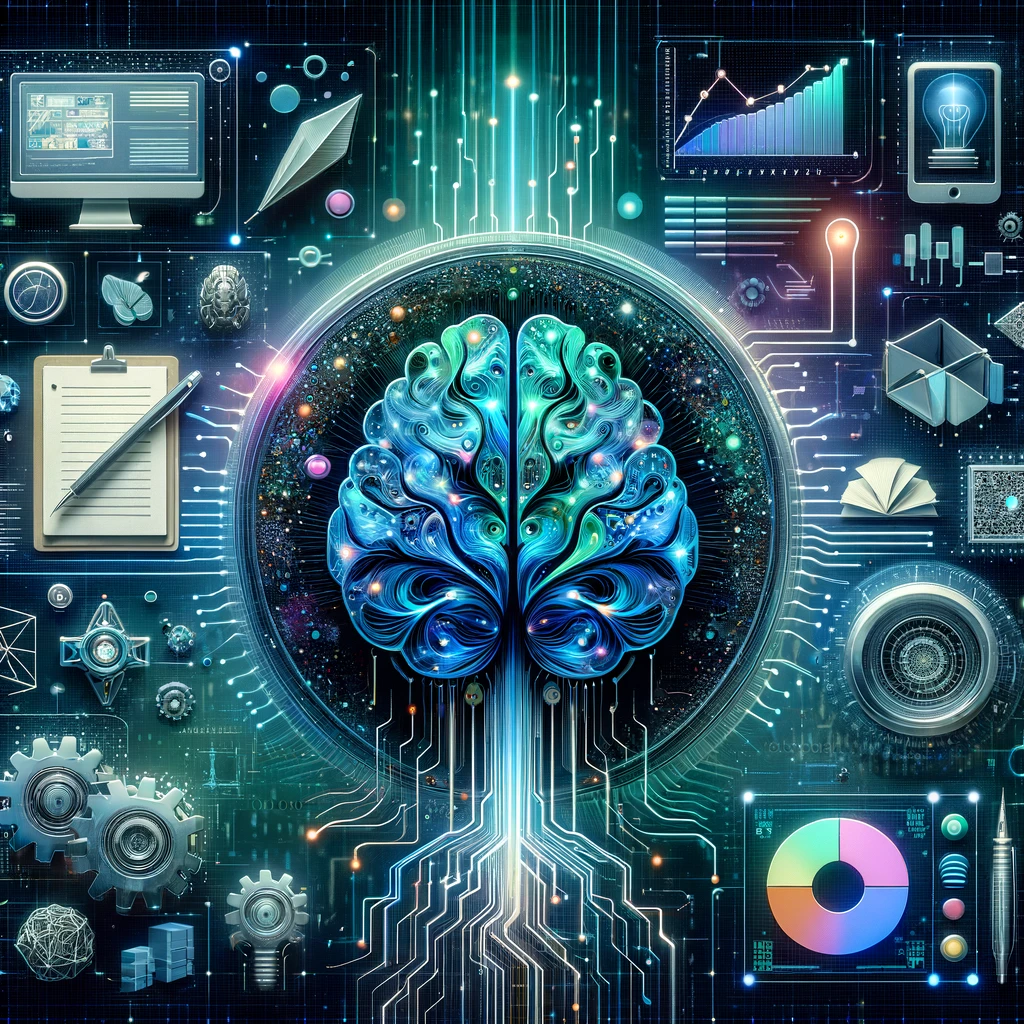
H. Generative Pre-Trained Transformer (GPT)
Introduction
The Generative Pre-Trained Transformer (GPT) represents a significant leap in Natural Language Processing (NLP).
Developed by OpenAI, GPT models, particularly GPT-3, have garnered attention for their ability to generate coherent and contextually relevant text that mimics human-like writing.
Scaling and Modifications in GPT Models
- Evolution of GPT Models: Starting from GPT, each subsequent iteration has seen an increase in the number of parameters, allowing for more complex and nuanced language generation. GPT-3, with its 175 billion parameters, is one of the largest language models ever created.
- Fine-tuning Strategies: GPT models can be fine-tuned for specific tasks, such as answering questions, text summarization, and even creating computer code. This involves additional training on a smaller, task-specific dataset to adapt the model to particular needs.
Applications of GPT
- Content Creation: GPT models are used for generating articles, stories, and even poetry, offering new tools for creative writing.
- Language Translation: Despite not being primarily designed for translation, GPT models show remarkable capabilities in translating between languages.
- Business Applications: GPT models are increasingly adopted in various business contexts, from generating marketing content to automating customer service interactions.
Limitations and Ethical Considerations
- Understanding Biases: GPT models can inherit biases from their training data like other artificial intelligence models. This can lead to the generation of biased or offensive content, raising ethical concerns.
- Output Control: Ensuring the accuracy and appropriateness of the generated content is a challenge, especially given the model’s potential to generate misleading or false information.
- Computational and Environmental Cost: Training and running large models like GPT-3 require significant computational resources, leading to high energy consumption and environmental impact.
Future of GPT and Similar Models
- Increased Efficiency: Efforts are underway to develop more efficient models that require less computational power, making them more accessible and sustainable.
- Improved Contextual Understanding: Ongoing research aims to enhance the models’ ability to understand and generate contextually relevant and coherent content.
- Addressing Ethical Concerns: The artificial intelligence community is actively engaged in finding ways to mitigate biases and ensure the ethical use of these powerful models.
In conclusion, GPT and similar transformer-based models have opened new frontiers in NLP, providing tools to generate human-like text with a wide range of applications.
As the technology evolves, addressing its limitations and ethical implications remains a crucial focus area.

I. AI in Robotics
Introduction
The integration of Artificial Intelligence (AI) in robotics has transformed what was once science fiction into reality.
AI in robotics encompasses the use of machine learning, computer vision, and other AI technologies to enable robots to perceive, understand, and interact with their environment in a more human-like manner.
Historical Overview and Milestones in Robotics
- Early Robotics: Initially, robotics was primarily about automating repetitive tasks in industries like manufacturing. These robots followed pre-programmed instructions without any ability to perceive or adapt to their environment.
- Integration of AI: The incorporation of artificial intelligence has led to a new generation of robots capable of learning, adapting, and making decisions. For example, the development of robotic arms that can learn to manipulate objects through trial and error, rather than relying on explicit programming.
AI Techniques in Modern Robotics
- Machine Learning and Computer Vision: These technologies are crucial for tasks like object recognition and environment mapping. Robots equipped with artificial intelligence can now understand and navigate complex environments, perform tasks like sorting and assembling with high precision, and even interact with humans.
- Reinforcement Learning: Particularly effective in robotic control systems, this technique enables robots to learn optimal actions through trial and error. For example, Boston Dynamics’ robots use reinforcement learning to perform complex maneuvers and adapt to changing terrains.
Applications in Various Fields
- Industrial Automation: Robots in manufacturing are now more flexible and adaptable, capable of performing a wider range of tasks with higher efficiency.
- Service Robots: In healthcare, education, and customer service, robots are increasingly being used to support and augment human work. For instance, robots in hospitals deliver medications, assist in surgeries, and provide companionship to patients.
Future Trends and Developments in Robotics
- Human-Robot Interaction (HRI): The focus is on making interactions between humans and robots more intuitive and natural. This includes developing robots that can understand and respond to human emotions and cues.
- Autonomous Robotics: The ultimate goal is to develop fully autonomous robots that can operate without human intervention in complex and dynamic environments. This includes self-driving cars, drones for delivery and surveillance, and robots for space exploration.
Challenges and Ethical Considerations
- Safety and Reliability: Ensuring that robots can operate safely, especially in environments shared with humans.
- Ethical Implications: Addressing concerns related to job displacement, privacy, and the ethical use of robots in sensitive areas like healthcare and security.
AI in robotics represents a significant technological advancement, offering immense potential across various sectors.
As the field evolves, ensuring the safe, ethical, and beneficial use of AI-powered robots remains a priority.

J. AI in Healthcare: Revolutionizing Medicine
Introduction
Artificial Intelligence (AI) in healthcare is revolutionizing the medical field, offering groundbreaking advancements in diagnosis, treatment planning, and research.
By leveraging artificial intelligence , healthcare professionals are able to provide more accurate, efficient, and personalized care.
AI in Diagnostics and Treatment Planning
- Image Analysis: AI algorithms, particularly deep learning models, have significantly improved the analysis of medical images such as X-rays, MRIs, and CT scans. These models can identify patterns indicative of diseases like cancer more accurately and quickly than human radiologists. For example, artificial intelligence systems are being used to detect early signs of diabetic retinopathy in retinal images.
- Personalized Treatment: artificial intelligence is also making strides in personalized medicine, where treatments are tailored to individual patients. This involves analyzing large amounts of patient data, including genetic information, to identify the most effective treatment plans. AI systems are aiding in the development of personalized drug therapies and treatment protocols for conditions like cancer and chronic diseases.
AI-Powered Research and Drug Discovery
- Accelerating Research: artificial intelligence is capable of processing and analyzing vast datasets far beyond human capability, significantly accelerating medical research. It’s being used to uncover new insights into diseases, identify potential therapeutic targets, and even predict disease outbreaks.
- Drug Development: In drug discovery, artificial intelligence algorithms are streamlining the process by predicting how different chemical compounds will behave and how likely they are to make an effective drug, thereby reducing the time and cost of drug development. AI-driven platforms are assisting researchers in identifying potential drug candidates for diseases like COVID-19.
Challenges and Ethical Considerations
- Data Privacy and Security: Handling sensitive patient data is a significant concern. artificial intelligence systems must adhere to strict privacy regulations and ensure data security to maintain patient confidentiality.
- Bias and Accuracy: There is a risk of bias in artificial intelligence systems, especially if the training data is not representative of the diverse patient populations. Ensuring the accuracy and fairness of AI diagnostics and recommendations is crucial to avoid misdiagnoses and ineffective treatments.
Future of AI in Healthcare
- Predictive Analytics: The future of artificial intelligence in healthcare includes the use of predictive analytics for disease prevention and management. AI models will be able to analyze patient data and lifestyle information to predict the likelihood of developing certain conditions, enabling early intervention.
- Robotics in Surgery: AI is also merging with robotics to enhance surgical procedures. Surgical robots, guided by artificial intelligence , can perform complex surgeries with precision and control beyond human capabilities.
- Global Health: Artificial intelligence has the potential to democratize healthcare, especially in underserved and developing regions. By providing access to AI-powered diagnostics and telemedicine, quality healthcare can become more accessible globally.
AI in healthcare represents a paradigm shift towards more data-driven, precise, and patient-centered care.
As the technology advances, it holds the promise of transforming every aspect of healthcare, making it more effective and accessible for all.

K. AI in Finance: Risk Management and Algorithmic Trading
Introduction
Artificial Intelligence (AI) has significantly impacted the finance sector, transforming how companies manage risk, make trading decisions, and interact with customers.
From algorithmic trading to fraud detection, AI’s influence is reshaping the financial landscape.
AI for Financial Analysis and Prediction
- Market Prediction: AI, particularly machine learning models, is employed to analyze and predict market trends. By processing historical data, these models can forecast stock prices, market movements, and economic changes. For example, neural networks are used to identify patterns in stock market data that are indicative of future price movements.
- Risk Assessment: AI-driven models are increasingly being used for credit scoring and risk assessment. By analyzing a broader set of data points, including non-traditional data such as social media activity or mobile phone usage, artificial intelligence can provide more accurate assessments of credit risk.
Algorithmic Trading and its AI-driven Evolution
- High-Frequency Trading (HFT): AI algorithms can execute trades at speeds and volumes beyond human capability. These algorithms analyze market data in real-time, making rapid trading decisions to capitalize on market changes.
- Portfolio Management: AI systems are also transforming portfolio management by optimizing investment strategies, balancing risks, and identifying investment opportunities. Robo-advisors, which use artificial intelligence to offer investment advice and manage portfolios, are becoming increasingly popular.
Regulatory and Ethical Challenges in AI for Finance
- Market Fairness: As AI and algorithmic trading become more prevalent, there are concerns about market fairness and the potential for AI-driven market manipulation.
- Regulatory Compliance: Financial institutions using AI must navigate a complex regulatory landscape. Ensuring artificial intelligence systems comply with financial regulations and ethical standards is crucial.
Future of AI in Finance
- Personalized Financial Services: AI is enabling more personalized banking and financial services, offering tailored advice and solutions based on individual customer data.
- Enhanced Fraud Detection: AI’s ability to rapidly analyze large datasets is being used to enhance fraud detection systems, identifying and preventing fraudulent transactions more effectively.
- Blockchain and AI: The integration of artificial intelligence with blockchain technology promises further innovations, especially in terms of security, transparency, and efficiency in financial transactions.
AI in finance is not just about automating tasks; it’s about leveraging data to make smarter, more efficient, and more accurate decisions.
As the technology continues to evolve, AI is expected to become even more integral to the finance industry, driving innovation and transforming traditional financial practices.
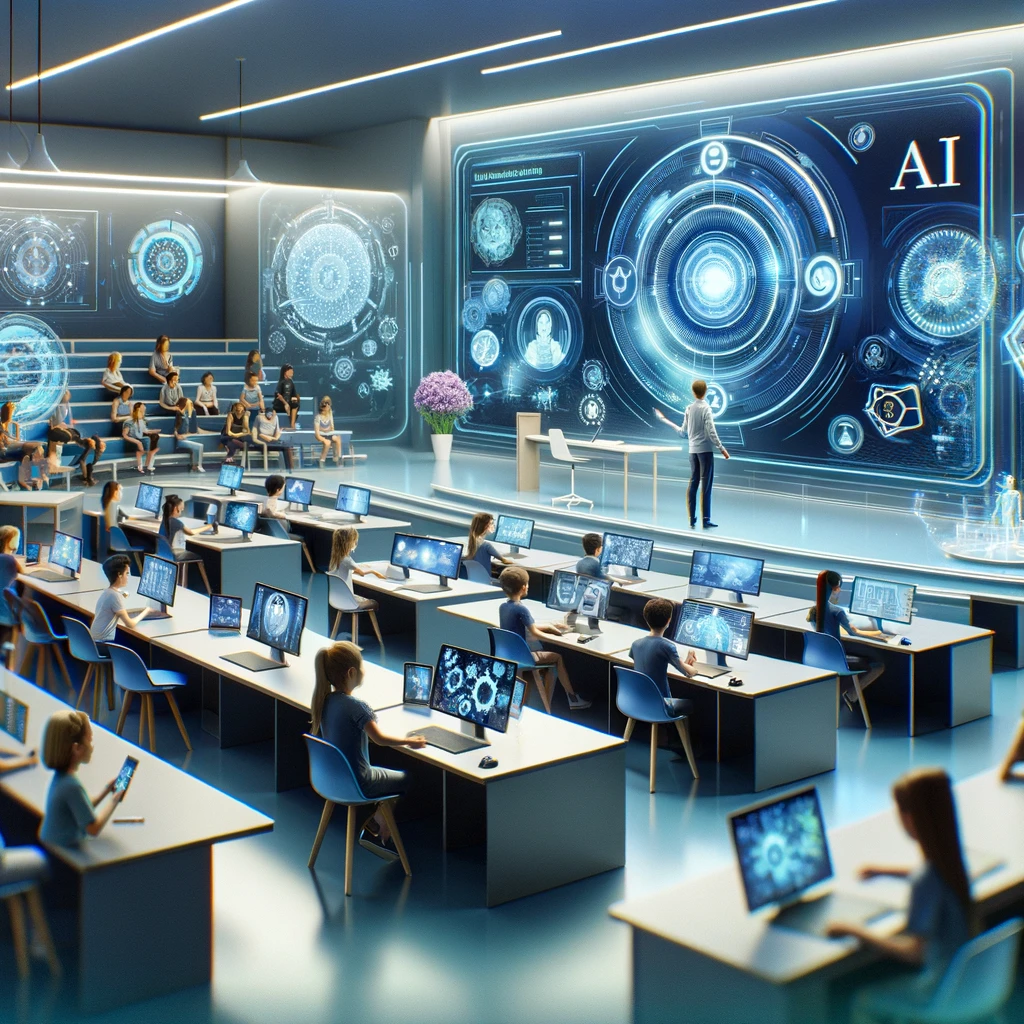
L. AI in Education: Personalized Learning and Assessment
Introduction
Artificial Intelligence (AI) is increasingly becoming a transformative force in education, offering personalized learning experiences and innovative assessment methods.
By leveraging AI, educators can adapt teaching methodologies to fit individual student needs, enhancing both engagement and learning outcomes.
Customized Learning Experiences through AI
- Adaptive Learning Systems: AI-powered adaptive learning platforms can tailor educational content to each student’s learning pace and style. These systems analyze students’ performance and learning habits to present customized resources and exercises. For instance, platforms like DreamBox Learning provide math lessons that adapt in real-time based on student responses.
- Personalized Content: AI algorithms can curate and create learning materials that match the individual educational needs and preferences of students. This includes personalized reading lists, problem sets, and interactive learning modules, ensuring that each student is challenged and supported appropriately.
AI in Educational Assessment
- Automated Grading: AI can automate the grading of standardized tests and even essays, providing quick and consistent feedback. This not only saves time for educators but also offers students immediate feedback on their performance, allowing for prompt corrections and learning.
- Performance Analysis: AI tools can analyze a student’s performance over time, identifying strengths and weaknesses. This data-driven approach enables targeted interventions and support, helping students to overcome specific learning obstacles.
Future of AI in Education
- Interactive Learning Environments: AI is paving the way for more immersive educational experiences through technologies like virtual reality (VR) and augmented reality (AR). These technologies can simulate real-world environments for practical learning, such as virtual science labs or historical explorations.
- Teacher Assistance: Artificial intelligence is also being used to assist teachers in non-teaching tasks like administrative work, scheduling, and tracking student progress. This allows teachers to devote more time to the actual act of teaching and personalized student interaction.
Challenges and Ethical Considerations
- Data Privacy and Security: As AI systems in education often require collecting sensitive student data, ensuring privacy and security is paramount.
- Bias and Fairness: There is a risk of bias in AI algorithms, which can lead to unfair or inaccurate assessments. Ensuring these systems are equitable and inclusive is essential.
AI in education holds the promise of a more personalized, efficient, and engaging learning experience.
As artificial intelligence technology continues to evolve, it is poised to significantly transform the educational landscape, making learning more accessible and tailored to individual needs.

M. AI in Environmental Science: Tackling Climate Change
Introduction
In the fight against climate change, Artificial Intelligence (AI) has emerged as a crucial ally.
By leveraging vast amounts of environmental data, AI is enabling more accurate predictions and efficient resource management, which are key to tackling environmental challenges.
AI for Climate Modeling and Prediction
- Advanced Climate Models: Artificial intelligence enhances the accuracy of climate models by processing and analyzing complex environmental data sets. Machine learning algorithms can identify patterns and predict climate trends, such as temperature changes, precipitation patterns, and extreme weather events.
- Example: AI has been used to improve the accuracy of climate models in predicting the intensity and trajectory of hurricanes. By analyzing historical weather data and real-time satellite imagery, artificial intelligence models provide more precise forecasts, aiding in timely evacuations and preparations.
AI in Conservation and Biodiversity
- Species Monitoring: AI-powered systems, including drones and automated sensors, are increasingly used for wildlife monitoring and biodiversity studies. These systems can track animal movements, monitor populations, and even identify species in vast wilderness areas.
- Habitat Protection: AI algorithms analyze satellite imagery and environmental data to identify threats to ecosystems, such as illegal logging, deforestation, and habitat fragmentation.
Sustainable Resource Management
- Energy Efficiency: AI optimizes energy use in various sectors, contributing to reducing emissions. Smart grids, powered by AI, can efficiently distribute renewable energy based on real-time demand and supply.
- Waste Management: Leveraging artificial intelligence for waste sorting and recycling processes enhances efficiency and promotes sustainable waste management practices.
Challenges and Opportunities
- Data Limitations: High-quality, comprehensive environmental data is crucial for effective artificial intelligence applications. Ensuring access to such data, especially in less monitored regions, remains a challenge.
- Balancing Goals: AI in environmental science must balance economic development with environmental protection. This involves using AI to find sustainable solutions that are both environmentally friendly and economically viable.
Future of AI in Environmental Science
- Predictive Analytics for Conservation: AI’s predictive capabilities can be expanded to anticipate environmental changes and threats, enabling proactive conservation efforts.
- Global Collaboration: AI facilitates global collaboration in environmental science, offering tools for shared data analysis and joint initiatives in climate change mitigation and biodiversity conservation.
In conclusion, AI offers transformative potential in environmental science, providing tools for more accurate modeling, effective resource management, and proactive conservation efforts.
As artificial intelligence technologies advance, their role in addressing environmental challenges is expected to become increasingly significant, offering hope for a more sustainable future.

N. AI in Entertainment: Revolutionizing Content Creation
Introduction
Artificial Intelligence (AI) is increasingly influencing the entertainment industry, reshaping how content is created, distributed, and consumed.
From music and art to film and gaming, AI’s capabilities are opening up new creative possibilities and transforming the entertainment experience.
AI in Music and Art
- Composition and Production: AI algorithms are being used to compose music and create art, sometimes in collaboration with human artists. These systems can analyze patterns in existing compositions to generate new pieces of music or artwork. For instance, AIVA (Artificial Intelligence Virtual Artist) is an artificial intelligence composer that creates emotional soundtracks for movies, games, and TV shows.
- Content Personalization: In streaming services, AI curates personalized playlists and recommendations based on user preferences and listening history, enhancing the user experience.
AI in Film and Gaming
- Automated Editing: AI tools in film editing analyze footage and suggest edits, cuts, and even generate trailers. These tools can significantly reduce the time and effort required in the editing process.
- Game Development: In gaming, AI is used to create more realistic and responsive game environments. AI algorithms can generate dynamic game scenarios, responsive non-player characters (NPCs), and even entire game levels. For example, artificial intelligence has been used in games like ‘No Man’s Sky’ to procedurally generate diverse and expansive game worlds.
Future Trends in AI-Driven Entertainment
- Immersive Experiences: AI is playing a crucial role in developing virtual reality (VR) and augmented reality (AR) content, offering more immersive and interactive entertainment experiences. AI-driven VR and AR can create realistic and engaging environments for gaming, movies, and interactive storytelling.
- Interactive Storytelling: AI is also enabling more interactive and personalized storytelling experiences. In interactive films and video games, artificial intelligence can alter the plot based on user choices, providing a unique experience for each viewer or player.
Challenges and Ethical Considerations
- Creative Integrity: As artificial intelligence becomes more involved in content creation, questions arise about originality and the role of AI in the creative process.
- Data Privacy: In content personalization, ensuring user data privacy and security is paramount.
- Bias and Representation: AI systems can inadvertently perpetuate biases present in their training data, impacting content diversity and representation.
AI in entertainment is not just automating processes; it’s enabling new forms of creativity and reshaping the user experience.
As artificial intelligence continues to evolve, it holds great potential to further revolutionize the entertainment industry, creating new ways for people to engage with and enjoy content.
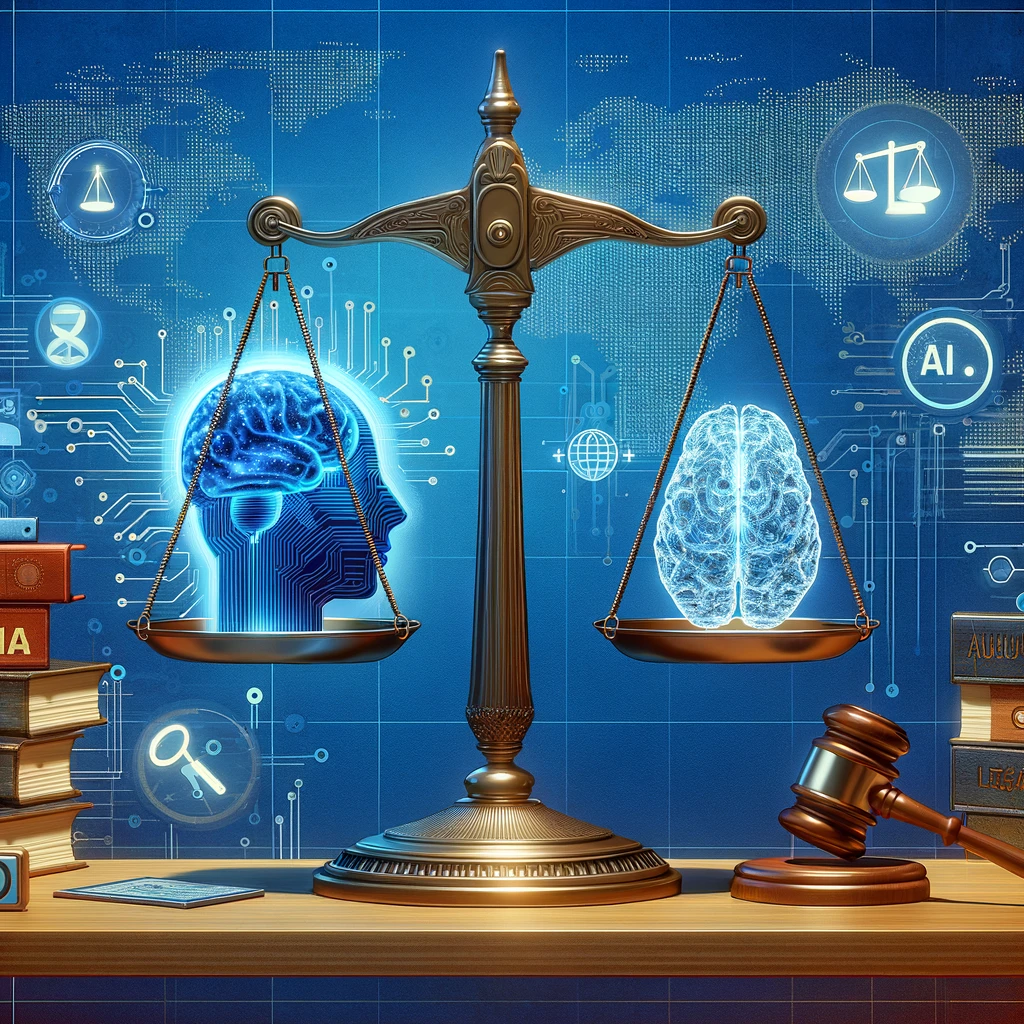
O. Ethical AI: Governance and Regulations
Introduction
As Artificial Intelligence (AI) increasingly integrates into various aspects of society, the need for ethical AI, governance, and regulation becomes paramount.
Ensuring that artificial intelligence systems are developed and deployed responsibly is crucial to mitigate risks and harness their potential for societal benefit.
Establishing Ethical Guidelines for AI
- Fairness and Transparency: Ethical artificial intelligence requires the development of systems that are fair and transparent in their operations. This includes addressing biases in algorithms and ensuring artificial intelligence decisions can be understood and questioned. For example, IBM’s AI Fairness 360 toolkit is an open-source library to help detect and mitigate bias in AI models.
- Privacy Concerns: With AI systems processing vast amounts of personal data, maintaining privacy is essential. Ethical AI practices involve implementing stringent data protection measures and respecting user consent.
AI Governance and Regulatory Frameworks
- Global Cooperation: Effective artificial intelligence governance requires international cooperation to establish global standards and regulatory frameworks. This collaboration ensures consistent guidelines across borders, crucial for multinational technology companies.
- Industry Standards: Different industries may require specific artificial intelligence regulations. For instance, AI in healthcare demands strict compliance with patient privacy laws, whereas AI in finance might focus more on security and transparency.
The Future of Ethical AI
- Accountability in AI Development: There’s a growing emphasis on making AI developers and companies accountable for their systems. This involves clear guidelines on who is responsible for AI decisions, especially in cases where AI systems cause harm.
- Public Awareness and Education: Educating the public about AI’s capabilities, limitations, and ethical implications is essential. An informed society can better participate in discussions about artificial intelligence and advocate for responsible AI development and use.
Challenges in Ethical AI
- Balancing Innovation and Regulation: Striking a balance between fostering AI innovation and imposing regulations to ensure ethical use is challenging. Over-regulation might stifle innovation, while under-regulation could lead to ethical breaches.
- Global Standards vs. Local Needs: Developing artificial intelligence regulations that are globally applicable yet sensitive to local cultural and societal norms is complex.
Ethical AI in Practice
- Real-world Applications: Ethical AI principles are being applied in various sectors. For example, in autonomous vehicles, ethical AI involves making decisions about safety and the prioritization of lives in critical situations.
- Collaboration for Ethical AI: Initiatives like the Partnership on AI, which involves industry leaders, nonprofits, and academics, are working together to establish best practices for ethical AI.
In conclusion, ethical AI, governance, and regulation are critical to ensuring that AI technology benefits society without causing unintended harm.
As artificial intelligence continues to evolve, these considerations will guide its responsible development and integration into everyday life.
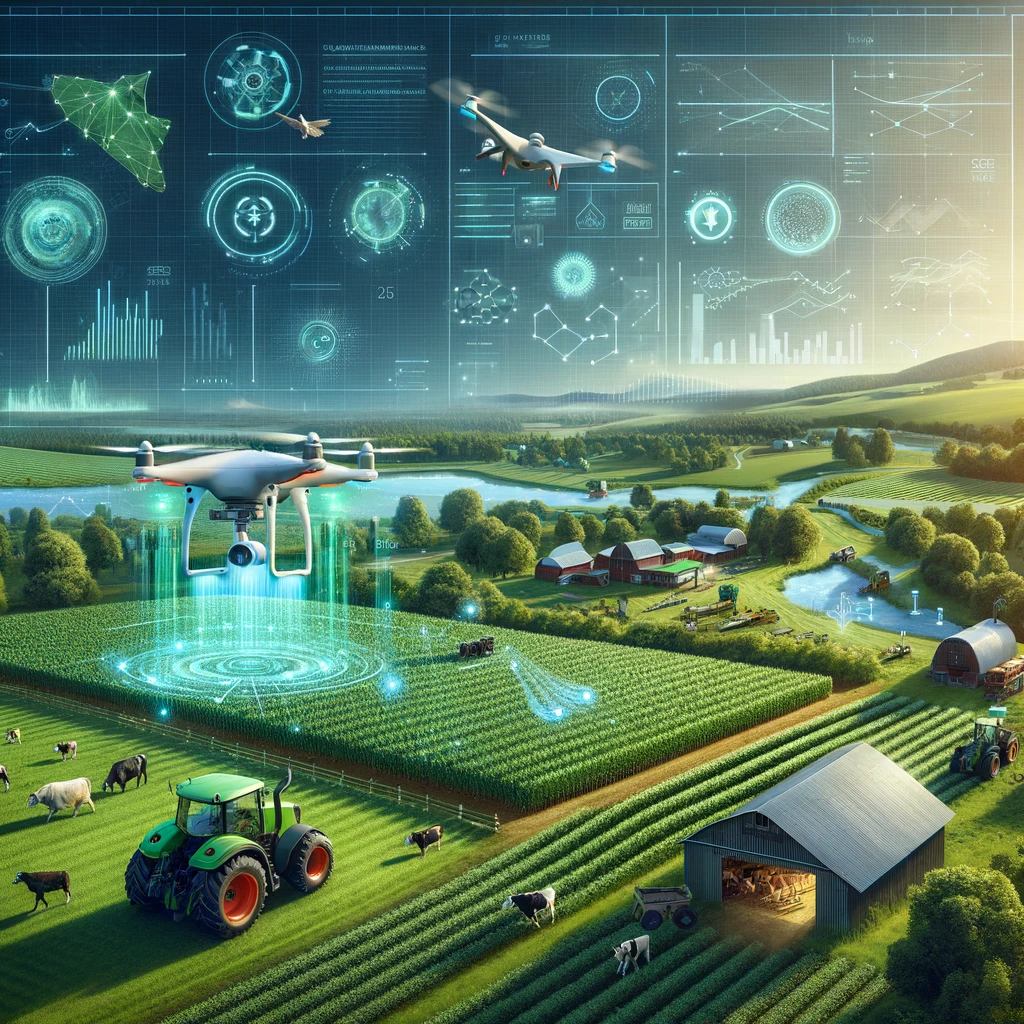
P. AI in Agriculture: Smart Farming Solutions
Introduction
Artificial Intelligence (AI) is increasingly becoming a game-changer in agriculture, introducing smart farming solutions that enhance productivity, sustainability, and efficiency.
From precision farming to automated livestock monitoring, AI’s potential in revolutionizing traditional farming practices is immense.
AI-Driven Crop Management
- Precision Agriculture: AI enables precision agriculture, where farming practices are precisely tailored to the varying conditions of different farm areas. For example, artificial intelligence algorithms analyze data from soil sensors, satellites, and drones to determine the optimal planting patterns, water usage, and fertilizer application.
- Disease and Pest Detection: AI-powered image recognition tools can scan crops for signs of diseases and pest infestations, allowing for early detection and treatment. This not only improves crop health but also reduces the excessive use of pesticides.
AI in Livestock Farming
- Health Monitoring: AI systems equipped with sensors monitor livestock health, tracking vital signs and behaviors to detect illnesses early. This proactive approach leads to better animal welfare and reduced loss from diseases.
- Behavioral Analysis: AI algorithms analyze behavioral patterns to optimize feeding strategies, enhance breeding programs, and improve overall farm management efficiency.
Supply Chain Optimization
- Predictive Analytics for Demand Forecasting: AI models predict market demand, helping farmers optimize production and reduce waste. This ensures a steady supply of agricultural products and maximizes profits.
- Automated Sorting and Packaging: AI-driven machinery streamlines the sorting and packaging process, enhancing efficiency and reducing labor costs.
Challenges and Future Prospects
- Data Accessibility: One of the challenges in implementing AI in agriculture is ensuring that farmers, especially in developing countries, have access to the necessary technology and data.
- Sustainability: AI in agriculture must focus on sustainable practices, balancing increased production with environmental conservation. For instance, artificial intelligence can help optimize water usage to prevent wastage and support sustainable water management.
Future of AI in Agriculture
- Climate Change Adaptation: AI’s predictive capabilities can help farmers adapt to changing climate conditions, predicting weather patterns and suggesting crop varieties suited to new environmental conditions.
- Global Food Security: By increasing efficiency and productivity, artificial intelligence can play a crucial role in addressing global food security challenges, ensuring a stable food supply for the growing global population.
AI in agriculture is not only transforming farming practices but also paving the way towards a more sustainable and food-secure future.
As technology advances, the integration of AI in agriculture is expected to become more widespread, offering innovative solutions to modern-day agricultural challenges.

Q. AI in Space Exploration: Pushing the Frontiers
Introduction
Artificial Intelligence (AI) is playing a pivotal role in space exploration, transforming how we observe and interact with the cosmos.
From analyzing vast amounts of astronomical data to autonomous navigation of spacecraft, AI’s applications in space are as vast as space itself.
AI in Satellite Data Analysis
- Earth Observation: AI algorithms process and interpret data from Earth observation satellites, providing insights into climate change, land use, and resource management. For example, AI-assisted analysis of satellite imagery can track deforestation or the melting of polar ice caps in real-time.
- Space Weather Prediction: AI models are used to predict solar activities and their potential effects on satellites and Earth. Machine learning algorithms analyze solar images and data to forecast solar flares and geomagnetic storms, which are crucial for protecting satellites and electrical grids on Earth.
AI in Robotic Space Missions
- Autonomous Navigation: Spacecraft and planetary rovers equipped with artificial intelligence are capable of autonomous navigation in the challenging environment of space. They can autonomously identify and avoid hazards, select paths, and even choose sites of scientific interest. NASA’s Mars rovers, for instance, use artificial intelligence for autonomous navigation and decision-making on the Martian surface.
- Scientific Data Analysis: AI tools are essential for processing and interpreting the vast amounts of data collected by space missions. They can identify patterns and anomalies in data from distant planets, stars, and galaxies, providing new insights into the universe.
Future of AI in Space Exploration
- Deep Space Missions: AI is expected to play a critical role in future manned and unmanned missions, including expeditions to Mars and beyond. artificial intelligence can assist in mission planning, onboard decision-making, and managing life support systems.
- Spacecraft Maintenance and Repair: The development of artificial intelligence systems for autonomous spacecraft maintenance and repair is a growing area of interest. This is particularly important for long-duration missions where immediate human intervention is not possible.
Challenges and Prospects
- Data Processing in Space: The limited computing resources on spacecraft pose challenges for on-board AI processing. Addressing this involves developing efficient AI algorithms that require minimal computational power.
- Interplanetary Communication Delays: AI can mitigate the challenges posed by communication delays in deep space missions, enabling spacecraft to make autonomous decisions without real-time instructions from Earth.
AI in space exploration represents a leap towards understanding and exploring the universe more effectively.
As AI technologies advance, their integration into space missions will continue to grow, offering innovative solutions to the challenges of exploring the final frontier.

R. AI in Smart Cities: Urban Transformation
Introduction
Artificial Intelligence (AI) is a key driver in the development of smart cities, offering solutions that enhance urban living by improving efficiency, sustainability, and citizen well-being.
From traffic control to energy management, AI’s role in urban transformation is multifaceted and impactful.
AI in Traffic Management and Transportation
- Traffic Flow Optimization: AI algorithms analyze traffic data in real-time to optimize traffic flow, reduce congestion, and enhance road safety. Smart traffic lights, for instance, can adjust their timings based on real-time traffic conditions, improving commute times and reducing vehicle emissions.
- Public Transport Management: AI enhances public transportation systems by predicting demand, optimizing routes, and scheduling. This not only improves service reliability but also encourages public transport usage, contributing to reduced urban congestion.
AI in Energy and Utilities
- Smart Grid Management: AI plays a crucial role in managing smart grids, balancing energy supply from diverse sources, including renewables. It optimizes energy distribution based on real-time demand, enhancing efficiency, and reducing wastage.
- Waste Management: AI-driven waste management systems optimize collection routes and schedules, leading to more efficient operations and cleaner cities. Smart bins equipped with sensors can signal when they are full, streamlining waste collection.
Safety and Security
- Surveillance Systems: AI-enhanced surveillance systems improve public safety by monitoring urban areas for suspicious activities. However, this application raises important considerations regarding privacy and civil liberties.
- Emergency Response: AI tools assist in emergency response by predicting and efficiently managing urban emergencies such as natural disasters or accidents. They can analyze data from various sources to guide response efforts and resource allocation.
Challenges and Prospects for Future Cities
- Data Privacy and Security: Managing data privacy in AI-integrated urban systems is a significant challenge. Ensuring that data collection and usage adhere to strict privacy standards is essential.
- Inclusive Urban Development: AI-driven smart city initiatives must be inclusive, ensuring that they benefit all residents and do not exacerbate existing social inequalities.
Future of AI in Smart Cities
- Predictive Maintenance: AI will increasingly be used for predictive maintenance of urban infrastructure, identifying areas that require repairs or upgrades before issues arise.
- Enhanced Citizen Engagement: AI can facilitate more effective engagement between city authorities and residents, using platforms that analyze citizen feedback and enhance communication.
Artificial intelligence in smart cities is not just about technology; it’s about creating urban spaces that are more livable, efficient, and sustainable.
As AI technologies continue to evolve, their integration into urban planning and management will further transform cities, making them smarter and more responsive to the needs of their inhabitants.
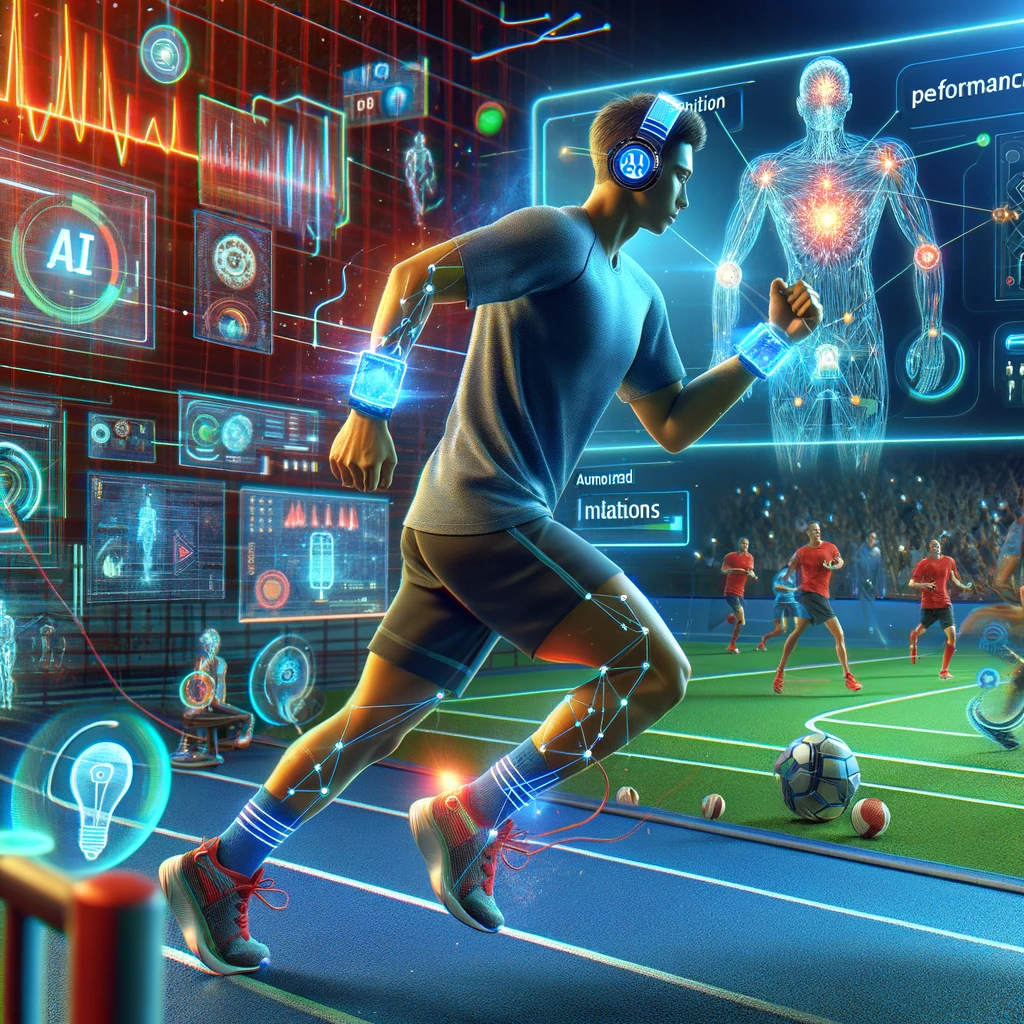
S. AI in Sports: Enhancing Performance and Engagement
Introduction
Artificial Intelligence (AI) is revolutionizing the sports industry by enhancing athletic performance, improving training methods, and transforming the fan experience.
From data-driven coaching tools to interactive fan engagement platforms, AI’s impact in sports is profound and multifaceted.
Performance Analysis and Athlete Development
- Data-Driven Training: AI algorithms analyze performance data collected from athletes during training and competitions. This data includes physical parameters, technique analysis, and tactical behaviors. Coaches and trainers use insights from this analysis to tailor training programs, enhance performance, and prevent injuries. For instance, wearables equipped with artificial intelligence analyze an athlete’s movements to provide feedback on improving technique or reducing the risk of injury.
- Injury Prediction and Prevention: AI models can predict the likelihood of injuries by analyzing data on athletes’ physical condition, training intensity, and historical injury records. This proactive approach allows for timely interventions, reducing downtime due to injuries.
Fan Engagement and Experience
- Game Analysis and Statistics: AI enhances the fan experience by offering in-depth game analysis and real-time performance statistics. Fans can access sophisticated analytics that were once only available to professional analysts, deepening their understanding and enjoyment of the sport.
- Personalized Content: AI-driven platforms deliver personalized content to fans, including match highlights, player statistics, and tailored news feeds, based on their preferences and viewing history.
AI in Sports Broadcasting
- Automated Content Creation: AI tools generate sports news and updates efficiently, catering to a wide range of fan interests. These systems can autonomously create match summaries and player performance reports.
- Camera Automation: AI-controlled cameras provide dynamic coverage of sports events, automatically focusing on key moments and actions without the need for manual operation.
Future Trends in AI and Sports
- Enhanced Coaching Tools: AI assists coaches with advanced analytics for strategy development and in-game decision-making. For example, artificial intelligence can simulate game scenarios to help coaches devise effective tactics.
- Virtual Reality Training: AI is increasingly being used in combination with virtual reality (VR) to provide immersive training experiences. Athletes can train in simulated environments that mimic real-world conditions, allowing for safe and focused skill development.
Challenges and Ethical Considerations
- Data Privacy and Athlete Rights: Ensuring the privacy of the vast amounts of data collected from athletes is crucial. There are also ethical considerations around how this data is used and who has access to it.
- Ensuring Fairness: AI tools must be carefully managed to ensure they do not provide unfair advantages and that their use aligns with the sporting spirit and regulations.
AI in sports is not just enhancing athletic performance and fan experiences but also opening new avenues for engagement and analysis.
As artificial intelligence technology advances, its integration into the world of sports is set to deepen, further transforming how sports are played, analyzed, and enjoyed.
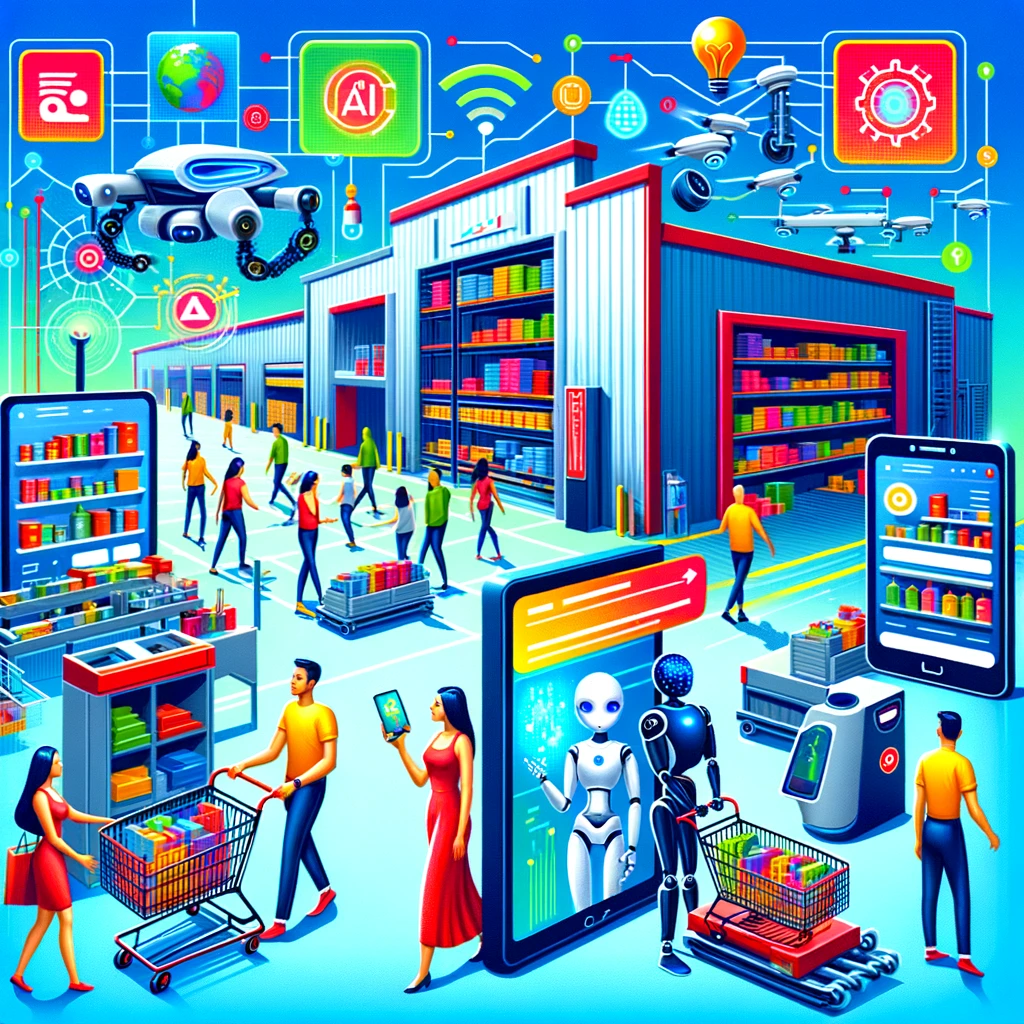
T. AI in Retail: Transforming Shopping Experiences
Introduction
Artificial Intelligence (AI) is significantly transforming the retail sector by personalizing shopping experiences, optimizing supply chains, and revolutionizing customer service.
This integration of artificial intelligence is enhancing both customer satisfaction and operational efficiency.
Personalization and Recommendation Systems
- Customized Shopping Experiences: AI-driven recommendation engines analyze customer data, including past purchases, search history, and preferences, to suggest products that are more likely to interest them. This not only improves the shopping experience but also increases sales. For example, Amazon’s recommendation system contributes to a significant portion of its sales by offering tailored product suggestions.
- Customer Behavior Analysis: Retailers use artificial intelligence to understand customer behavior patterns. By analyzing data from various touchpoints, retailers can tailor their marketing strategies and store layouts to better meet customer needs and preferences.
Inventory and Supply Chain Management
- Predictive Inventory Management: AI systems forecast market demands and trends, allowing retailers to optimize inventory levels. This minimizes overstocking or stockouts, reducing storage costs and ensuring product availability.
- Supply Chain Optimization: AI enhances the efficiency of supply chains by predicting the best routes and methods for transportation and delivery, factoring in variables like weather conditions, traffic, and carrier performance.
AI in Store Operations
- Automated Checkout Systems: AI is enabling the development of cashier-less stores. Using a combination of computer vision, sensor fusion, and deep learning, stores like Amazon Go allow customers to pick up products and leave without traditional checkout processes.
- In-Store Analytics: AI-powered cameras and sensors provide retailers with insights into customer foot traffic, dwell time, and product interaction within the store. This data can be used to optimize store layout, product placement, and staffing.
Challenges and Future Directions
- Data Privacy and Ethical Concerns: Protecting customer data and using it ethically is a major concern in the AI-driven retail sector. Retailers must adhere to data privacy laws and ethical guidelines to maintain customer trust.
- Omnichannel Experiences: Integrating artificial intelligence seamlessly across online and offline channels presents challenges but is essential for a unified and consistent customer experience.
Future of AI in Retail
- Augmented Reality (AR) Shopping: Combining artificial intelligence with AR will enable customers to try products virtually before purchasing, enhancing the online shopping experience.
- Intelligent Personal Assistants: AI-powered personal shopping assistants, both online and in physical stores, will provide personalized advice, product recommendations, and customer service.
AI in retail is reshaping how businesses interact with customers, manage operations, and understand market dynamics.
As artificial intelligence technologies continue to evolve, they are set to further revolutionize the retail industry, making it more efficient, customer-friendly, and innovative.

U. AI in Cybersecurity: Defending Against Digital Threats
Introduction
In the rapidly evolving landscape of cybersecurity, Artificial Intelligence (AI) has become an indispensable ally.
AI’s ability to quickly analyze large volumes of data and learn from them makes it a powerful tool in identifying and responding to cyber threats.
Threat Detection and Response
- Anomaly Detection: AI systems excel at identifying patterns and anomalies in network traffic, which can indicate a cybersecurity threat. By constantly learning what normal network behavior looks like, artificial intelligence can flag unusual activities that might signify a breach or an attack. For instance, artificial intelligence tools are used to detect unusual login attempts that could indicate a brute force attack.
- Automated Response: AI can not only detect threats but also respond to them in real-time. For example, if a network intrusion is detected, an artificial intelligence system can automatically isolate affected systems to prevent the spread of the breach.
AI in Vulnerability Management
- Predictive Analysis: AI tools analyze known vulnerabilities and predict which are most likely to be exploited. This helps organizations prioritize their security efforts on the most critical vulnerabilities.
- Patch Management: AI can automate the process of applying patches to software vulnerabilities, ensuring that systems are updated as soon as fixes become available, thereby minimizing the window of opportunity for attackers.
AI in Identity and Access Management
- Biometric Authentication: AI enhances the accuracy and security of biometric verification systems, such as facial recognition or fingerprint scanning, by learning from vast datasets to accurately identify individuals.
- Behavioral Analysis: AI systems monitor user behavior to detect deviations that might indicate compromised credentials. For example, if a user’s typical behavior suddenly changes, it could signal that their account has been taken over by an unauthorized user.
Challenges and Future Prospects
- Evolving Threat Landscape: Cyber threats are constantly evolving, requiring artificial intelligence systems to continuously learn and adapt. The challenge lies in ensuring that AI keeps pace with the ever-changing tactics of cybercriminals.
- AI-Driven Attacks: As AI becomes more sophisticated, there’s a growing risk of AI being used for malicious purposes, such as developing advanced malware or automating cyber attacks. Defending against AI-driven threats is an emerging challenge in cybersecurity.
Ethical Considerations
- Privacy Concerns: The use of AI in cybersecurity often involves processing large amounts of personal or sensitive data. Ensuring that this data is handled responsibly and in compliance with privacy laws and regulations is critical.
AI in cybersecurity represents a potent tool in the fight against digital threats. Its ability to analyze data at scale, learn from patterns, and respond quickly to threats makes it an invaluable asset in securing digital assets and networks.
As technology evolves, AI’s role in cybersecurity is set to become even more pivotal, offering both opportunities and challenges in safeguarding the digital landscape.
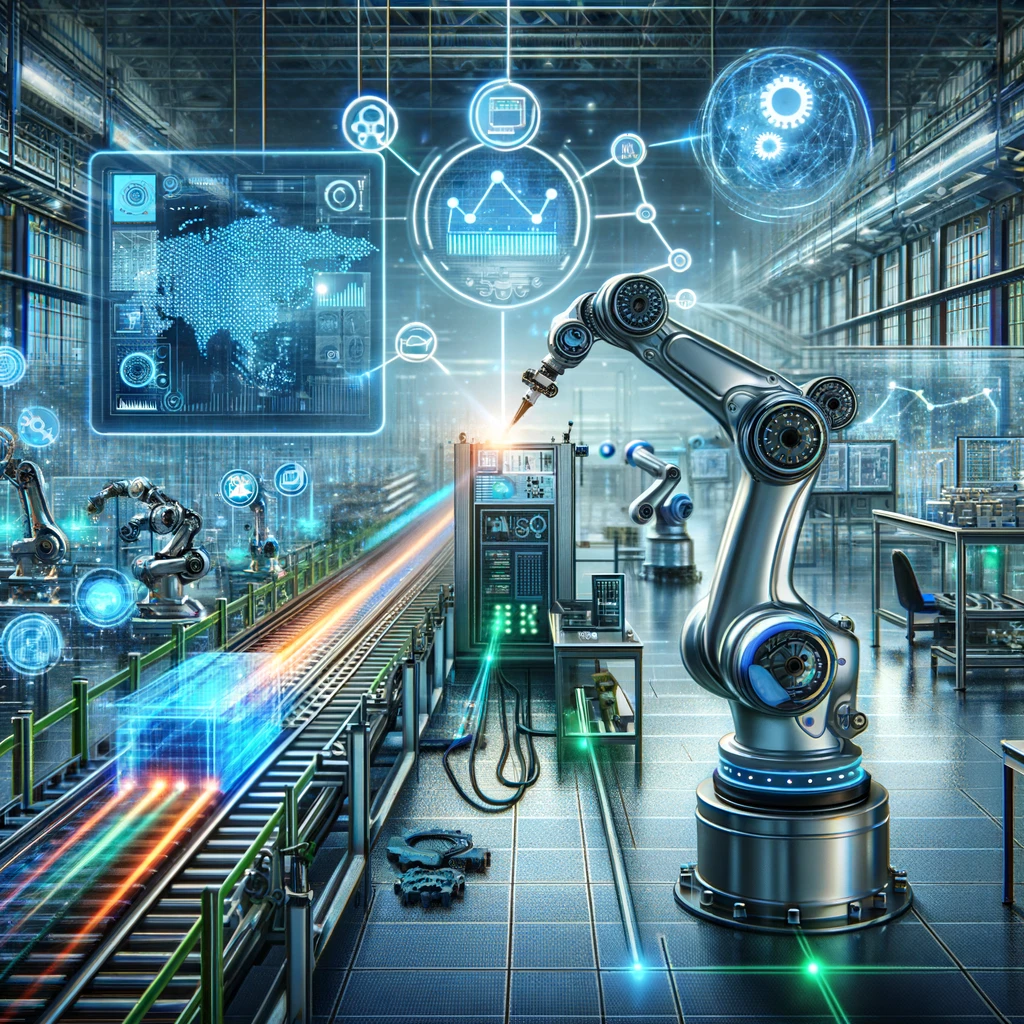
V. AI in Manufacturing: Industry 4.0
Introduction
The integration of Artificial Intelligence (AI) into manufacturing, a key aspect of Industry 4.0, is radically transforming production processes.
Artificial intelligence is enhancing automation, improving quality control, and optimizing supply chain management, paving the way for more efficient and intelligent manufacturing.
Automation and Production Efficiency
- Smart Manufacturing: AI systems in manufacturing plants analyze data from various sources like sensors and production equipment to optimize operations. This includes predictive maintenance, where AI predicts equipment failures before they happen, reducing downtime. For example, Siemens uses artificial intelligence in its gas turbines to predict and rectify potential issues, enhancing efficiency and lifespan.
- Robotics and Assembly: AI-powered robots in assembly lines can adapt to different tasks, increasing flexibility in production. They can learn and improve their tasks over time, leading to increased productivity.
Quality Control and Inspection
- Automated Inspection Systems: AI-driven visual inspection systems can detect defects and quality issues more accurately and rapidly than human inspectors. These systems use machine vision technologies to inspect products at high speed, ensuring high quality and consistency.
- Process Optimization: AI algorithms analyze production data to identify inefficiencies and suggest improvements. This can lead to significant reductions in waste and improvements in product quality.
Supply Chain Optimization
- Demand Forecasting: AI improves demand forecasting by analyzing market trends, historical sales data, and other relevant factors. Accurate demand forecasts enable better production planning, inventory management, and resource allocation.
- Logistics and Distribution: AI optimizes logistics operations by predicting the best routes, delivery schedules, and methods for transportation, considering factors like weather conditions, traffic, and carrier performance.
Challenges and Future of AI in Manufacturing
- Integration with Legacy Systems: One of the main challenges is integrating artificial intelligence technologies with existing manufacturing systems and processes. This often requires significant investment and change management.
- Workforce Development: As AI transforms manufacturing processes, there is a growing need to upskill the workforce. Training employees to work alongside artificial intelligence systems and robotics is crucial for a smooth transition to Industry 4.0.
Future Trends
- Customization and Personalization: AI enables mass customization in manufacturing, allowing for the production of personalized products at scale.
- Collaborative Robots (Cobots): The future of manufacturing will see an increase in the use of cobots, robots that work alongside humans, enhancing safety and efficiency.
AI in manufacturing is not just a technological upgrade; it represents a fundamental shift in how goods are produced and delivered.
As AI continues to evolve, its role in driving the efficiency, sustainability, and innovation of manufacturing processes is set to grow exponentially.

W. AI in Legal and Compliance: Automating Legal Processes
Introduction
The incorporation of Artificial Intelligence (AI) in legal and compliance fields is transforming the way legal processes are conducted.
AI is automating complex tasks, enhancing efficiency, and providing more accurate compliance monitoring, thereby reshaping the landscape of legal practices.
Document Analysis and Management
- Contract Review and Analysis: AI algorithms are adept at scanning through vast quantities of legal documents quickly, identifying key clauses, and flagging potential issues. This capability is particularly useful in contract review, due diligence, and legal research, where speed and accuracy are crucial. Tools like Kira Systems and LawGeex are being used by law firms and corporate legal departments to automate the review of legal documents.
- Legal Research: AI is revolutionizing legal research by rapidly sifting through case law, legal precedents, and statutory materials to provide comprehensive research assistance. This not only saves time but also ensures that no critical information is overlooked.
Compliance Monitoring
- Regulatory Compliance: In industries heavily regulated, like finance and healthcare, AI systems monitor compliance with laws and regulations. They can keep track of the ever-changing regulatory landscape and help businesses stay compliant, thus avoiding hefty fines and legal issues.
- Fraud Detection: AI algorithms are employed to identify patterns and anomalies indicative of fraudulent activities. By analyzing transactions, communications, and other data, AI can flag suspicious activities for further investigation.
AI in Litigation and Case Prediction
- Predictive Analytics: AI tools analyze past court decisions and legal precedents to predict outcomes of legal cases. This technology aids lawyers in strategy formulation and assessing the likelihood of success in litigation.
- E-discovery: The use of AI in electronic discovery (e-discovery) streamlines the process of identifying, collecting, and producing electronically stored information in response to a legal request. AI can efficiently process large volumes of data, reducing the time and cost involved in litigation.
Challenges and Ethical Considerations
- Accuracy and Reliability: Ensuring the accuracy and reliability of AI tools in legal contexts is paramount. Incorrect or biased legal advice or document analysis could lead to serious legal consequences.
- Ethical Use of AI: The legal field must address ethical concerns around the use of AI, including issues of transparency, accountability, and the potential displacement of legal jobs.
Future of AI in Legal and Compliance
- Advanced Document Management: AI is expected to become more sophisticated in managing and analyzing legal documents, potentially even predicting legal trends and advising on legal strategies.
- Collaboration between AI and Legal Professionals: The future will likely see a more collaborative approach where AI tools augment the capabilities of legal professionals, rather than replacing them.
AI in legal and compliance is revolutionizing the field, offering tools that provide significant efficiency gains and enhanced accuracy.
As AI technologies continue to advance, their role in legal practices is expected to grow, further automating and refining legal processes.

X. AI in Social Media: Influencing User Experience
Introduction
Artificial Intelligence (AI) plays a pivotal role in shaping the social media landscape.
It influences how content is personalized, how users interact with platforms, and how information is moderated, significantly impacting the overall user experience.
Content Personalization and Recommendation
- Tailored Feeds: AI algorithms analyze user behavior, preferences, and interactions to curate personalized content feeds. This not only enhances user engagement but also ensures that users are exposed to content that is relevant and interesting to them. For instance, Facebook’s News Feed uses AI to show posts that are most relevant to individual users based on their past activity.
- Recommendation Algorithms: Platforms like YouTube and TikTok use sophisticated AI algorithms to recommend videos to users, keeping them engaged and increasing the time spent on the app. These recommendations are based on a variety of factors, including user interactions, viewing history, and content popularity.
User Behavior Analysis and Targeted Advertising
- Behavioral Insights: AI tools collect and analyze data on user behavior, allowing social media companies to understand user preferences and tailor advertising campaigns accordingly. This targeted approach leads to higher engagement rates and better advertising ROI.
- Ad Optimization: AI optimizes ad placements and content to maximize user engagement and conversion rates. It dynamically adjusts advertising strategies based on real-time user data and feedback.
Moderation and Security
- Automated Moderation: AI is crucial in content moderation, detecting and removing inappropriate or harmful content. Machine learning models are trained to identify violations of platform policies, ranging from hate speech to misinformation.
- Fake Account and Spam Detection: AI systems are employed to identify and take action against fake accounts, bots, and spam activities, maintaining the integrity and safety of social media platforms.
Challenges and Future Trends
- Data Privacy and Ethical Concerns: The extensive use of AI in social media raises concerns about user data privacy and ethical use of personal information. Ensuring transparency in data usage and adhering to privacy regulations are ongoing challenges.
- Bias in AI Algorithms: There is a risk of bias in AI algorithms, which can affect content visibility and user experience. Addressing these biases to ensure fair and unbiased content delivery is crucial.
Future of AI in Social Media
- Enhanced User Privacy: Developing AI solutions that prioritize user privacy and data security is a key focus area.
- Advanced Social Media Analytics: Future advancements in AI will offer deeper insights into social trends, user sentiments, and behavioral patterns, further refining content personalization and advertising strategies.
AI’s role in social media is transformative, offering sophisticated tools for content personalization, user engagement, and platform moderation.
As AI technology continues to evolve, it will further reshape the social media landscape, offering more personalized, secure, and engaging user experiences.
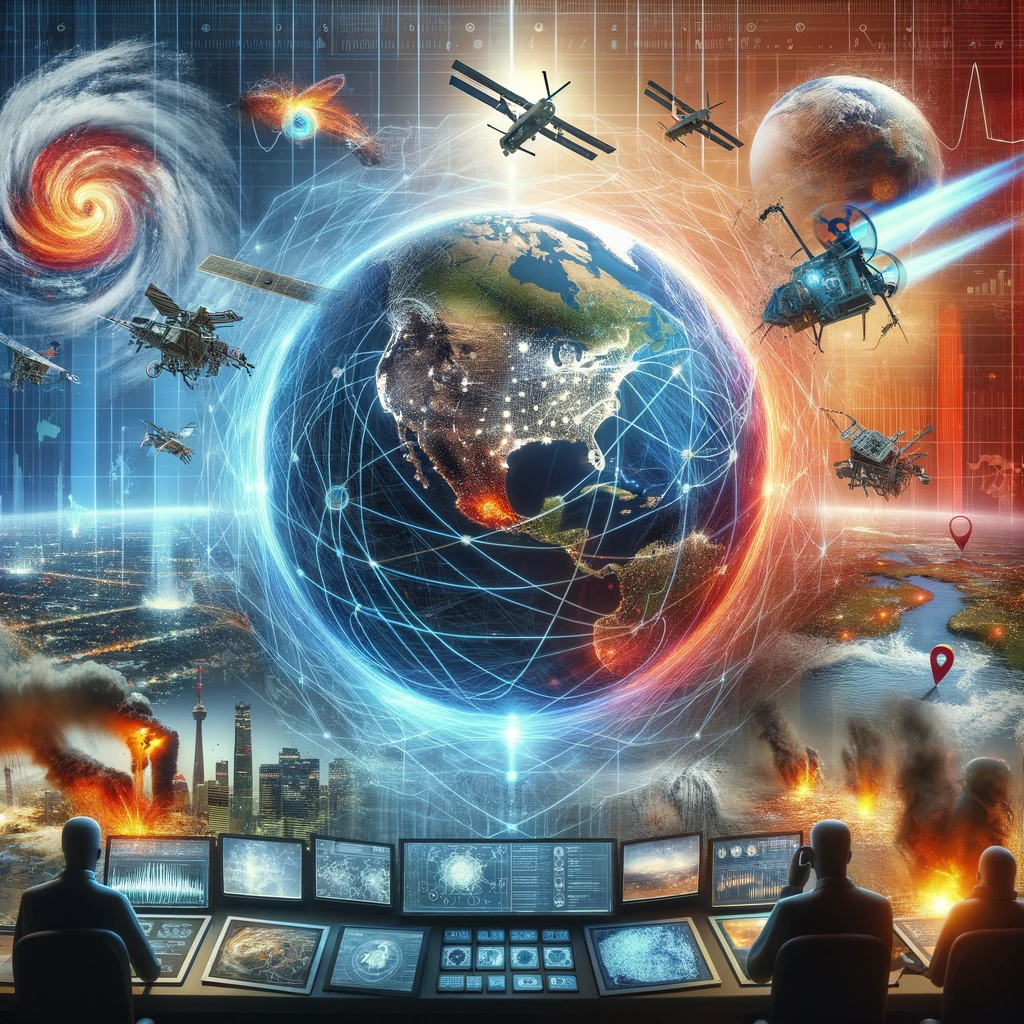
Y. AI in Disaster Management and Response
Introduction
Artificial Intelligence (AI) is increasingly critical in disaster management and response, offering tools for better prediction, efficient response, and effective recovery strategies.
By analyzing vast datasets, AI can help anticipate disasters, optimize rescue operations, and manage post-disaster scenarios.
Predictive Analytics for Disaster Preparedness
- Early Warning Systems: AI algorithms are instrumental in developing early warning systems for natural disasters like earthquakes, tsunamis, and hurricanes. These systems analyze seismic data, weather patterns, and historical records to predict potential disasters, enabling timely evacuation and preparation.
- Risk Assessment Models: AI-powered risk assessment tools evaluate the potential impact of disasters on different regions. By analyzing geographical data, infrastructure information, and population density, these models help in strategic planning and resource allocation for disaster-prone areas.
AI in Emergency Response and Relief Operations
- Real-Time Situation Analysis: During a disaster, AI systems can process data from various sources, including satellite imagery, social media, and ground reports, to provide a comprehensive view of the situation. This information is crucial for coordinating rescue efforts, identifying affected areas, and deploying resources effectively.
- Resource Optimization: AI optimizes the distribution of aid and resources in disaster-hit areas. Machine learning models can predict the needs of affected communities and recommend the most efficient ways to distribute food, medical supplies, and shelter.
Post-Disaster Recovery and Analysis
- Damage Assessment: Post-disaster, AI tools are used to assess damage to infrastructure and the environment. Drones equipped with AI-powered cameras survey affected areas, providing detailed imagery that helps in evaluating the extent of damage and planning reconstruction efforts.
- Learning from Events: AI systems analyze data from past disasters to improve future response strategies. By identifying successful interventions and areas needing improvement, AI contributes to building more resilient disaster response mechanisms.
Challenges and Future Prospects
- Data Accessibility and Reliability: Effective AI-based disaster management relies on access to accurate and timely data. Ensuring the availability of such data, especially in less monitored or remote regions, is a challenge.
- Collaboration Across Agencies: AI-driven disaster management requires seamless collaboration between various agencies, including government bodies, NGOs, and international organizations. Establishing integrated platforms and shared data repositories is essential for coordinated efforts.
Ethical and Societal Considerations
- Equitable Resource Distribution: AI systems must ensure that disaster response and resource allocation do not inadvertently favor certain groups over others, maintaining fairness and equity.
- Privacy Concerns: The use of AI and surveillance tools in disaster management raises privacy issues that need to be addressed, ensuring that data collection and use comply with ethical standards.
AI in disaster management and response represents a significant advancement in how we prepare for, respond to, and recover from disasters.
As AI technology continues to evolve, its role in enhancing disaster resilience and management capabilities is expected to grow, offering more effective and efficient ways to handle catastrophic events.
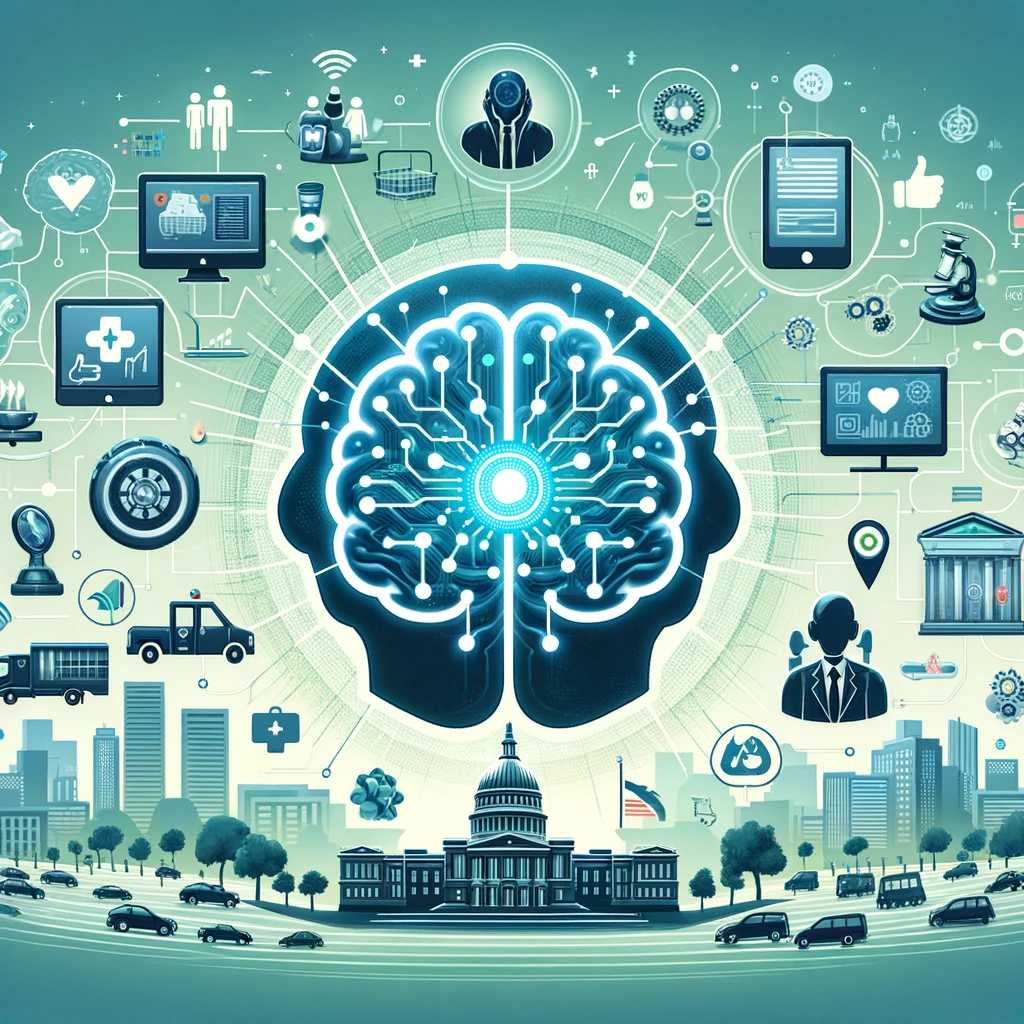
Z. AI in Public Policy: Shaping Governance
Introduction
Artificial Intelligence (AI) is increasingly influencing public policy, offering novel ways to analyze complex data, enhance decision-making, and improve public services.
Its integration into governance is transforming how policies are developed, implemented, and evaluated.
AI in Policy Analysis and Development
- Data-Driven Decision Making: AI assists policymakers in analyzing complex data sets, providing insights that inform policy decisions. For instance, AI models can simulate the potential impacts of policy changes in areas like healthcare, education, and urban planning, offering a data-driven approach to policy formulation.
- Predictive Modeling: AI’s predictive capabilities are used to forecast the outcomes of policy decisions. This helps policymakers understand the potential long-term effects of their strategies, enabling more informed and effective governance.
Public Engagement and Services
- Citizen Engagement Tools: AI-powered platforms are being developed to facilitate public participation in governance. These tools analyze public feedback on policy proposals, helping governments understand citizen needs and preferences.
- Automated Public Services: AI is enhancing efficiency in public services such as healthcare, education, and transportation. By automating routine tasks, AI allows public agencies to focus more on strategic initiatives and direct human interaction where it’s most needed.
AI in Regulatory Compliance and Enforcement
- Regulatory Monitoring: AI systems ensure compliance with laws and regulations across various sectors. They can monitor transactions, communications, and other activities for adherence to legal standards.
- Fraud Detection and Prevention: In public sector operations, AI tools are employed to identify patterns indicative of fraudulent activities, enhancing transparency and accountability.
Challenges and Ethical Considerations
- Balancing Efficiency and Privacy: While AI can greatly enhance the efficiency of public services, it’s crucial to balance this with privacy concerns. Ensuring that AI applications in public policy respect citizen privacy is paramount.
- Transparency and Accountability: Maintaining transparent AI-driven decision-making processes in governance is essential to ensure public trust and accountability.
Future of AI in Public Policy
- Policy Analysis and Development: Advanced AI tools will increasingly be used to model and analyze complex societal and economic systems, providing more nuanced insights for policy development.
- Enhanced Public Service Delivery: AI will continue to transform public service delivery, making it more personalized, efficient, and accessible.
AI’s role in public policy signifies a shift towards more data-informed and efficient governance. As AI technology evolves, it’s poised to become a vital tool in shaping policies that address the needs of modern societies while ensuring fairness, transparency, and public engagement.
Conclusion: Embracing AI’s Transformative Power Across Sectors
As we journey through the alphabet from A to Z, exploring the diverse and profound impacts of Artificial Intelligence (AI) across various sectors, it becomes clear that AI is not just a technological advancement; it’s a paradigm shift redefining our world.
AI’s capabilities are vast and transformative, from enhancing healthcare through predictive analytics and personalized medicine (Section J) to revolutionizing manufacturing with intelligent automation and quality control (Section V).
In education (Section L), AI paves the way for personalized learning experiences. In contrast, space exploration (Section Q) emerges as a critical tool for deep space missions and data analysis.
The realms of entertainment (Section N), sports (Section S), and retail (Section T) are also witnessing AI-driven innovations that personalize experiences and optimize operations.
AI’s role in public policy and governance (Section Z) underscores its potential as a policy-making tool that can analyze complex societal data and enhance public service delivery. Similarly, in disaster management (Section Y), AI stands as a vital component in predicting, responding to, and recovering from catastrophic events.
However, the journey of AI is not without challenges. Ethical considerations, such as privacy concerns (Section O), bias in algorithms (Section X), and the need for transparent and responsible AI deployment, are critical themes across all sectors.
The balance between leveraging AI’s benefits and addressing these challenges is an ongoing endeavor requiring global cooperation and continuous innovation.
The future of AI, rich with possibilities, points towards more sophisticated, efficient, and human-centric applications.
As AI becomes increasingly embedded in our daily lives, its potential to augment human capabilities, improve quality of life, and address complex global challenges is both exciting and promising.
In summary, the journey through AI’s applications across sectors reveals a technology that is reshaping the very fabric of society and industry.
As we embrace AI’s transformative power, our focus must remain on harnessing its potential responsibly, ethically, and inclusively, ensuring that AI serves as a force for good, enhancing human experiences and capabilities across the globe.

